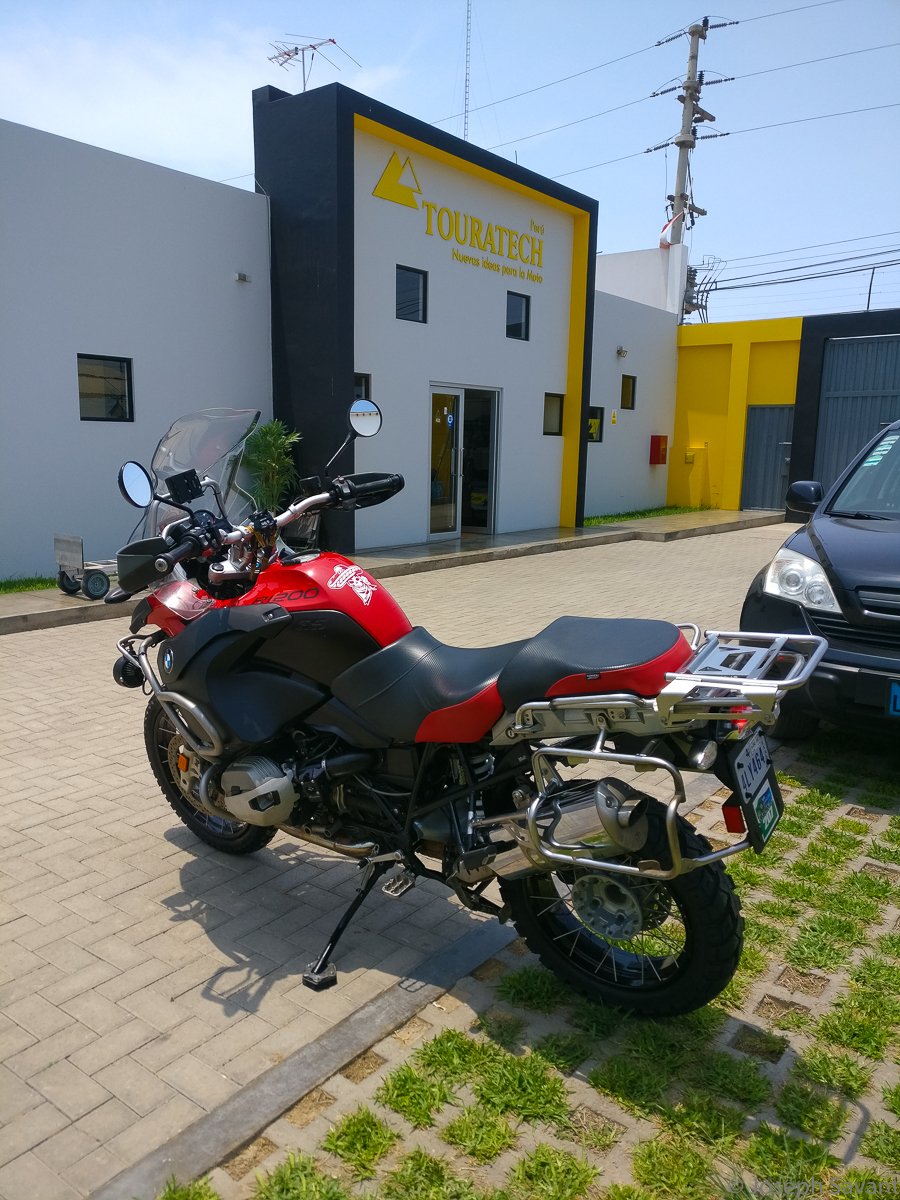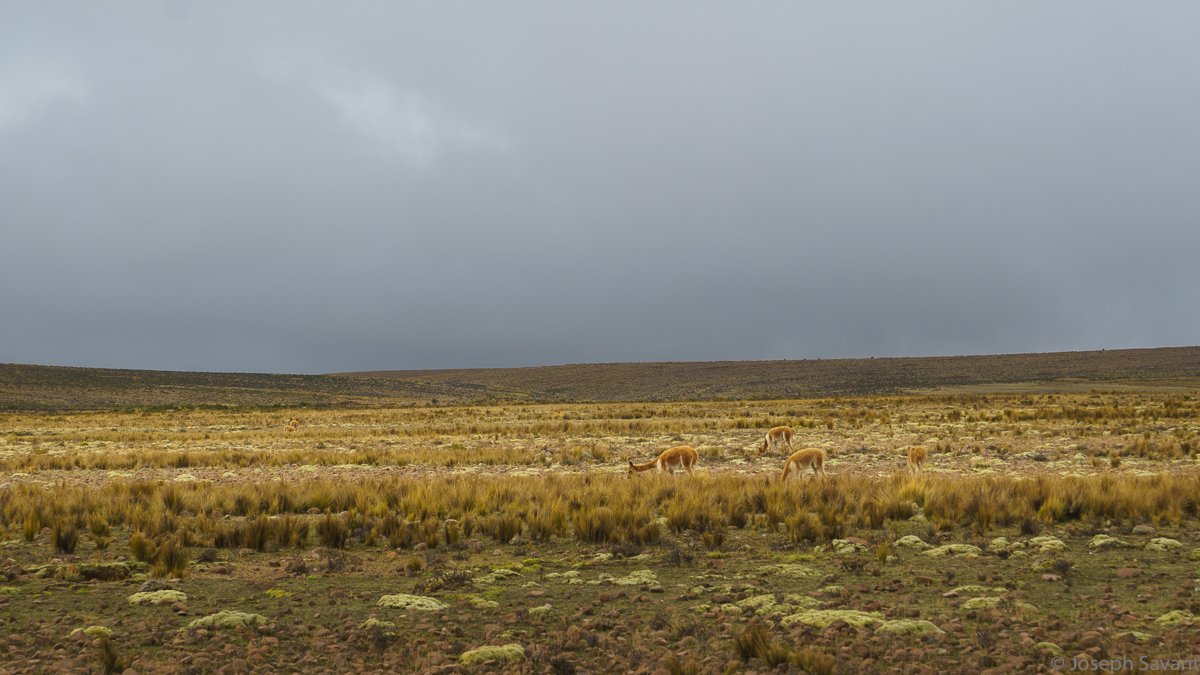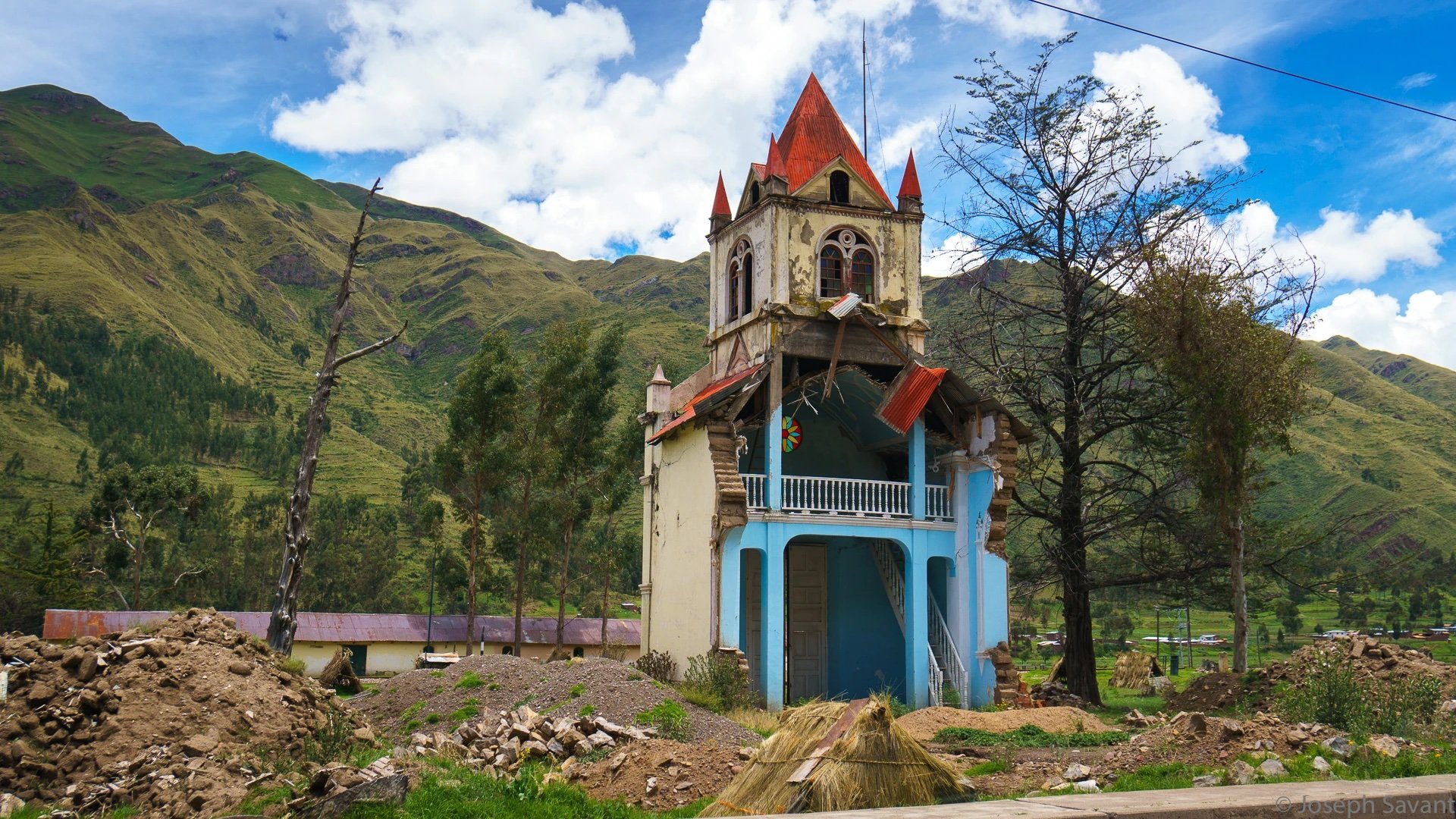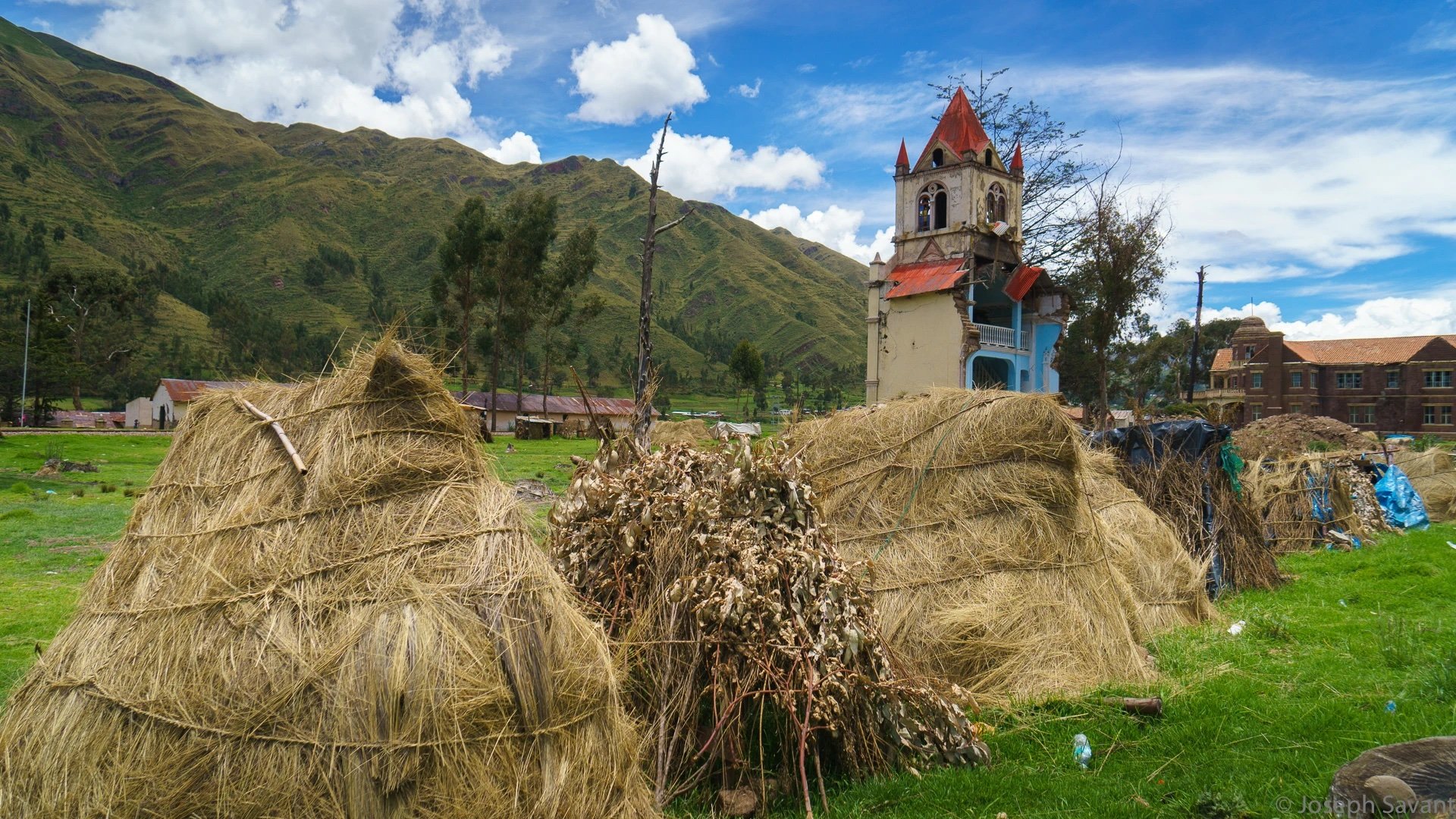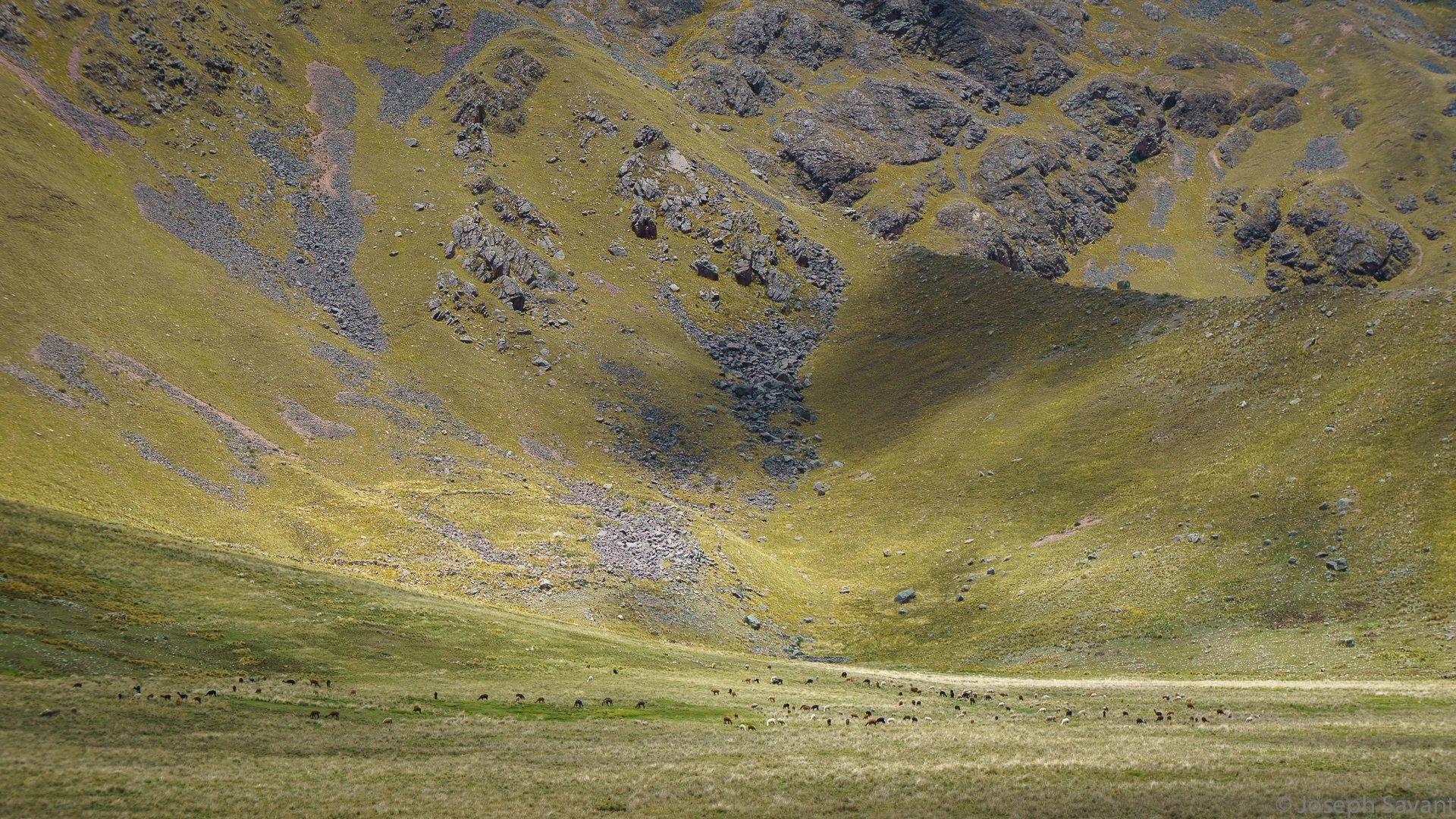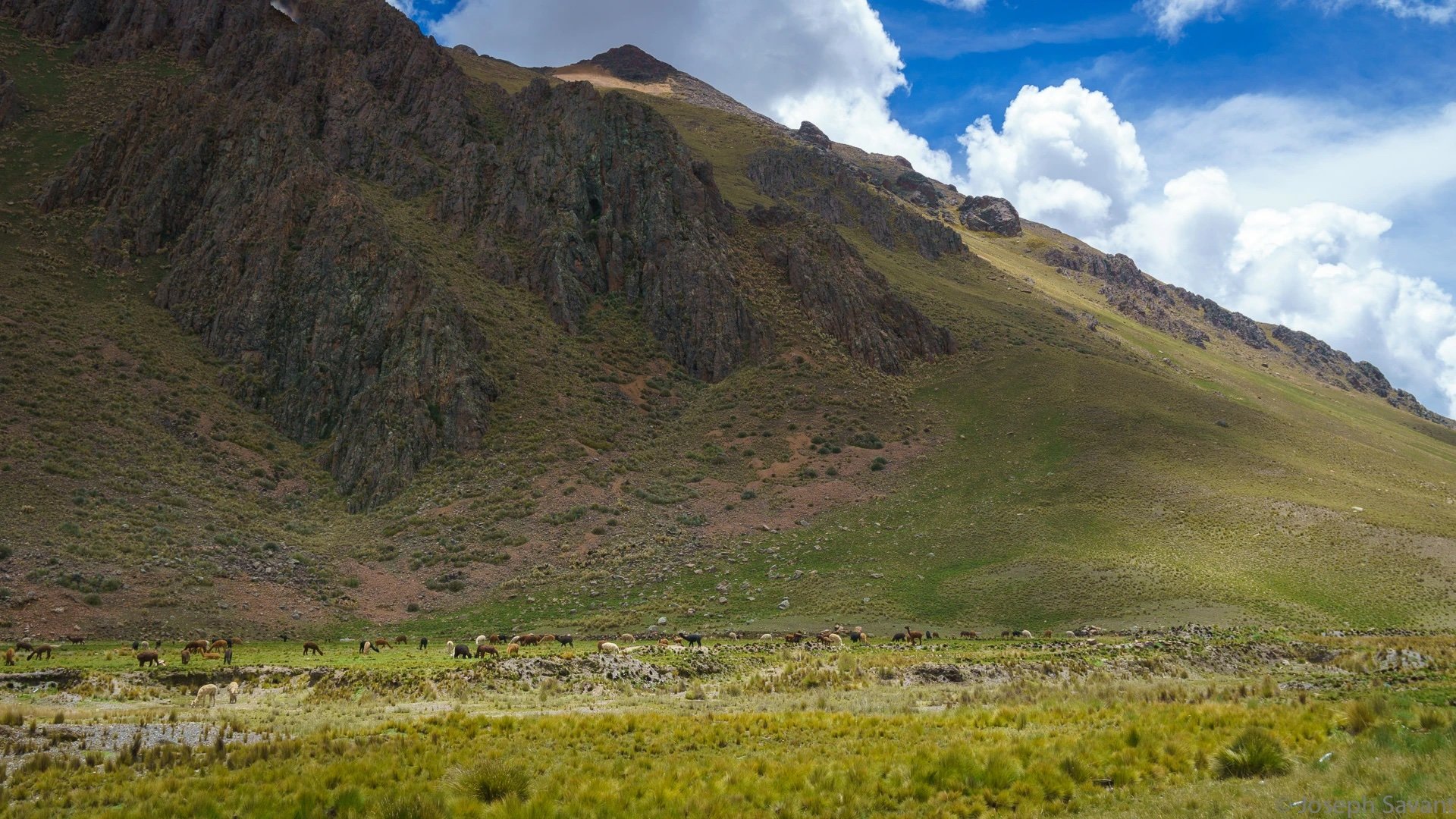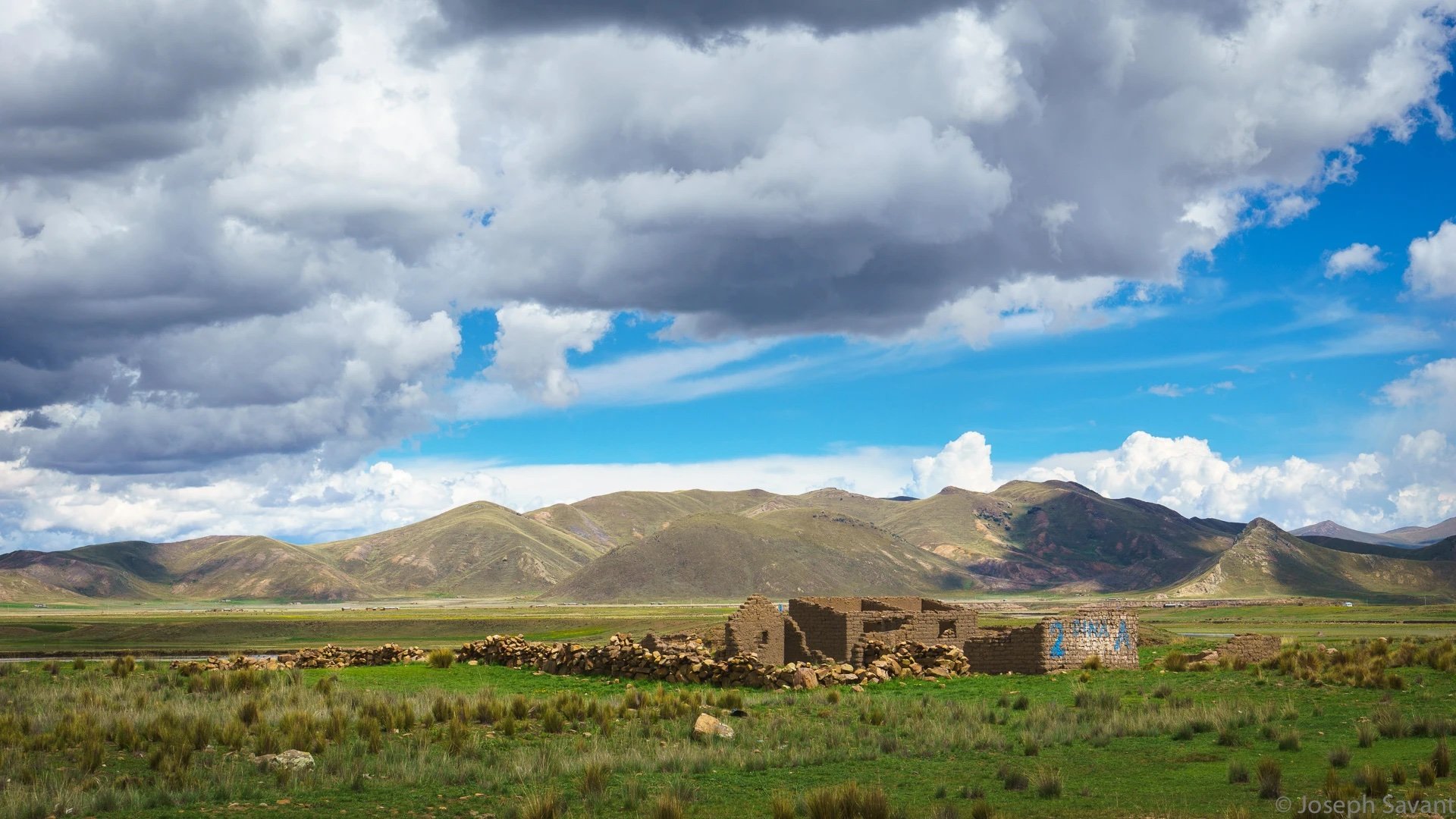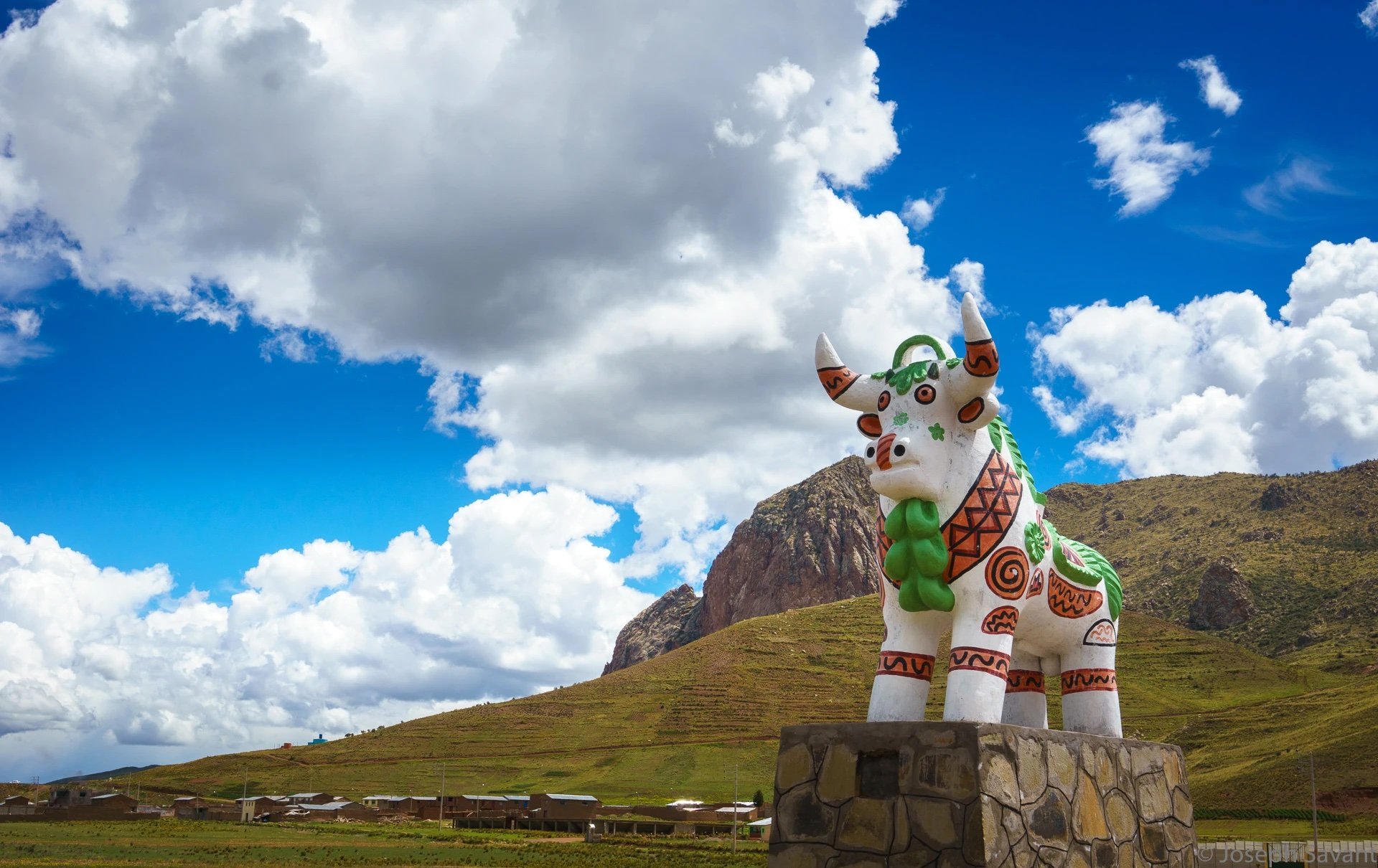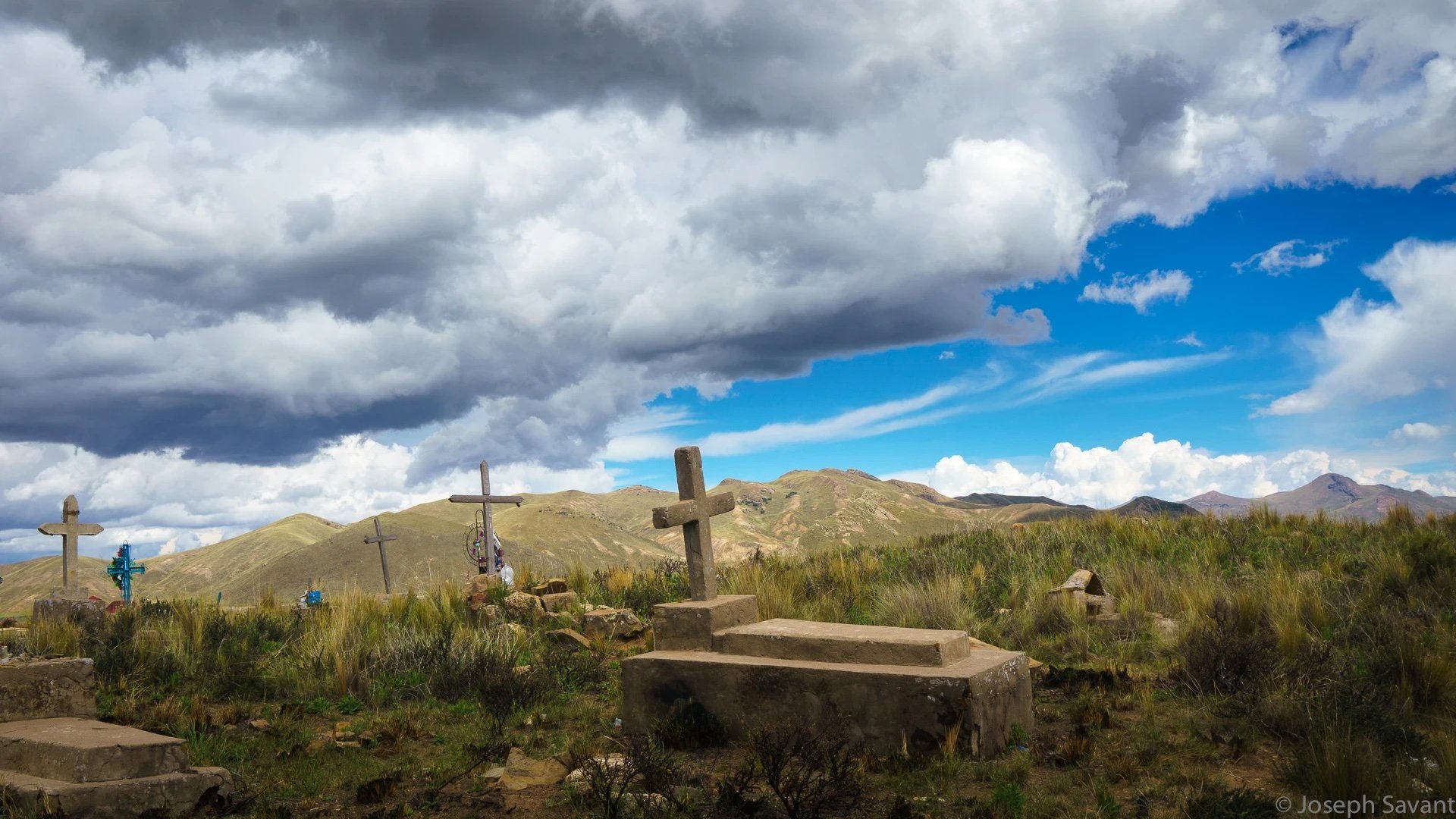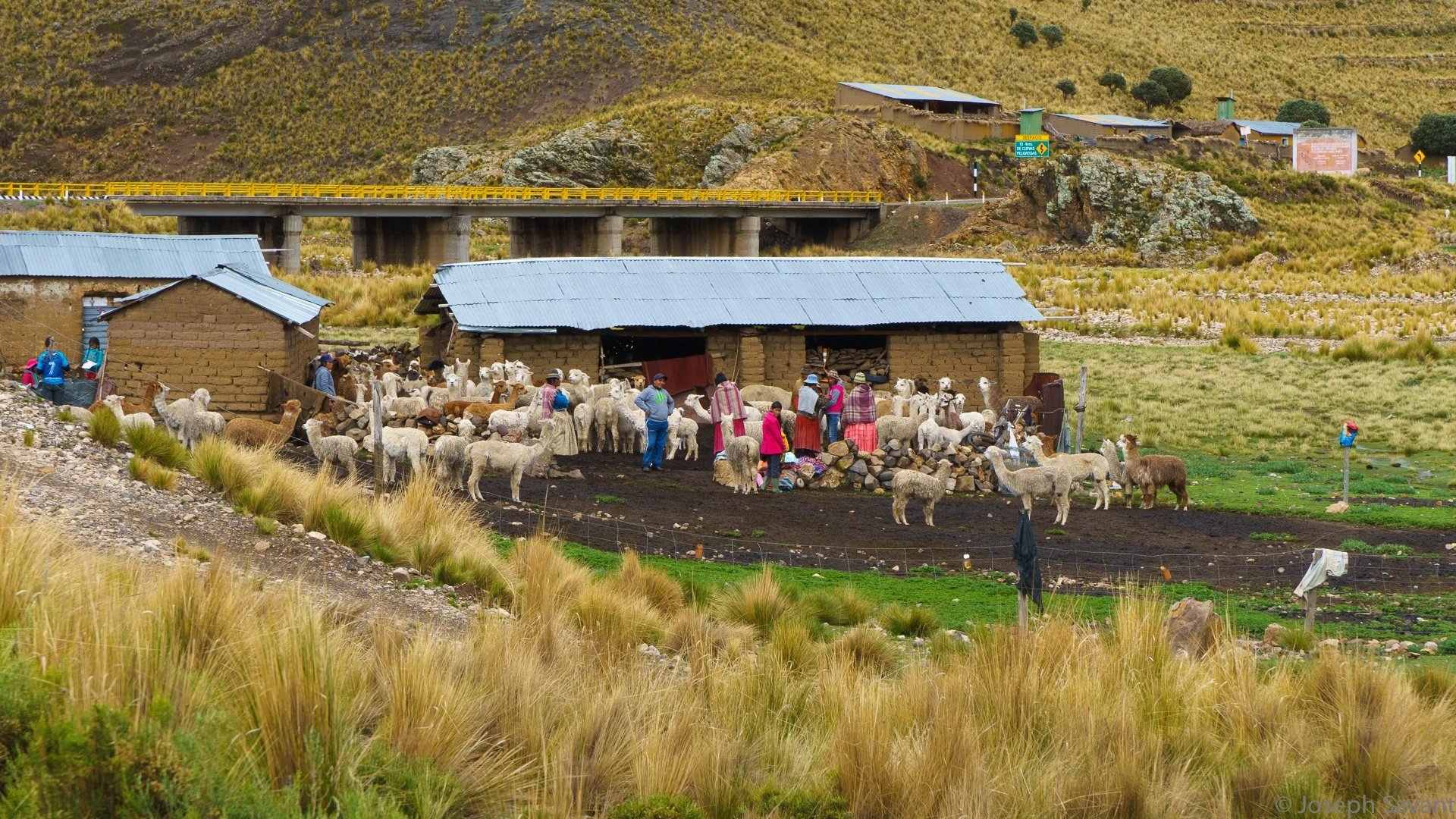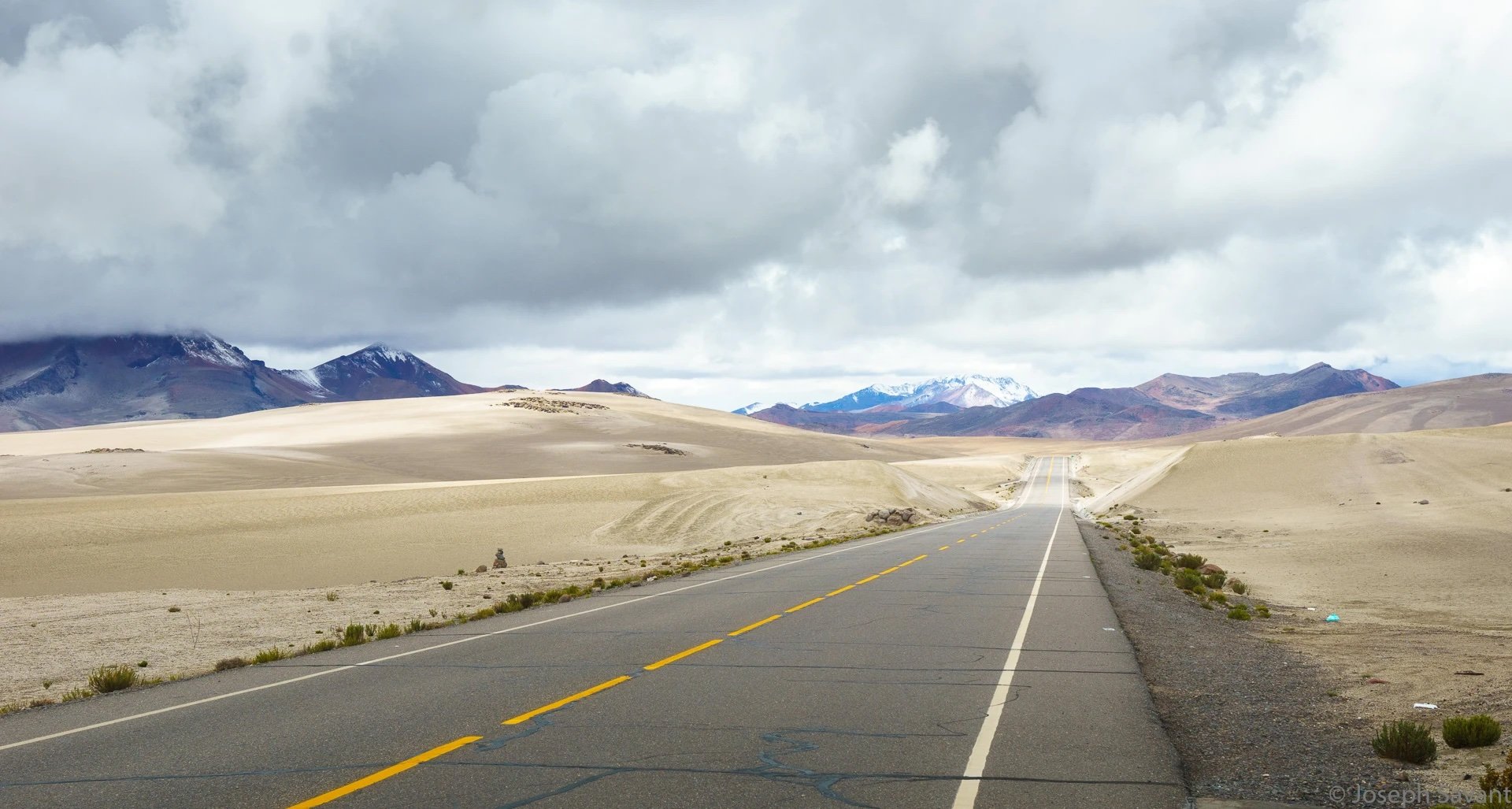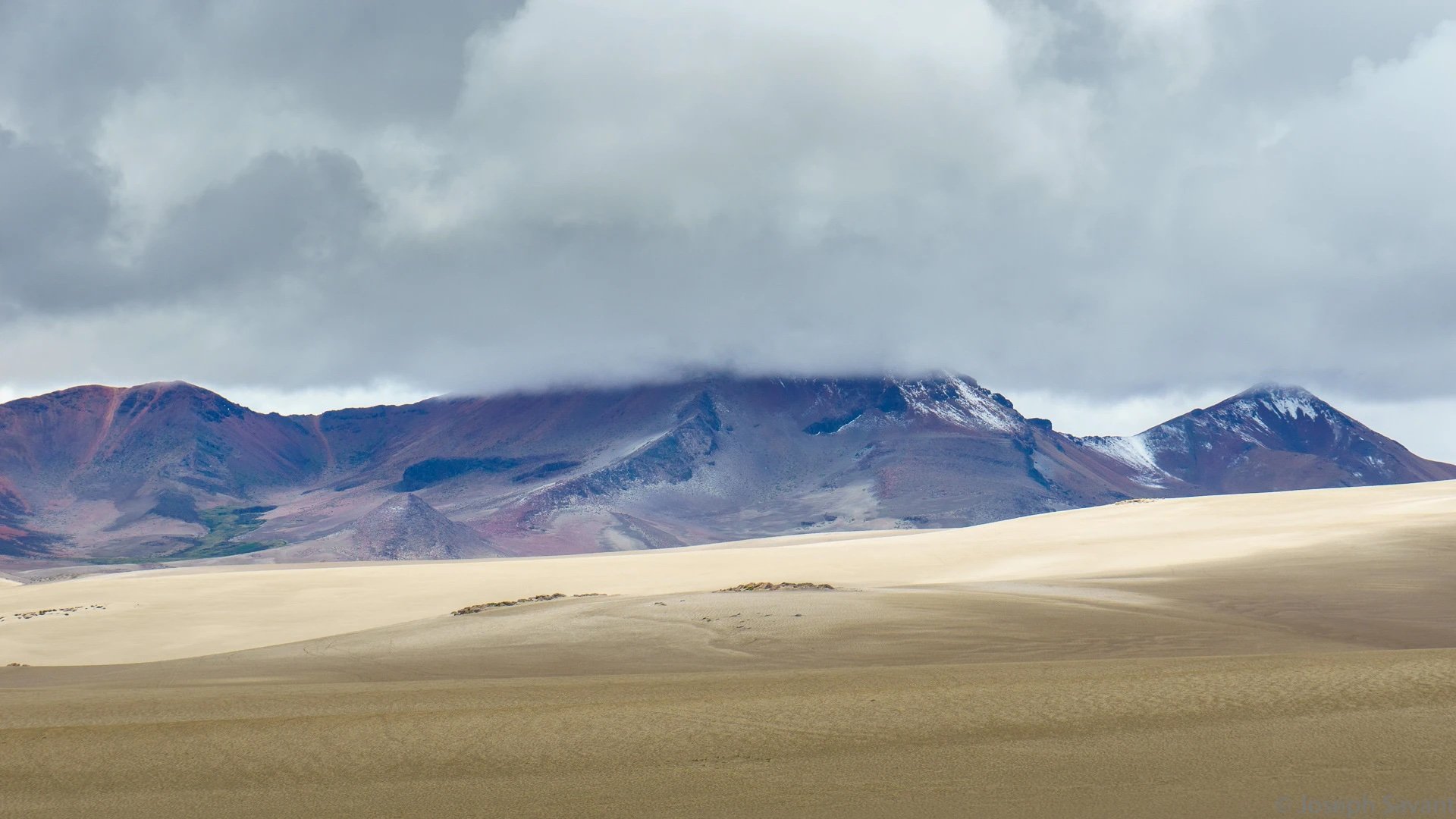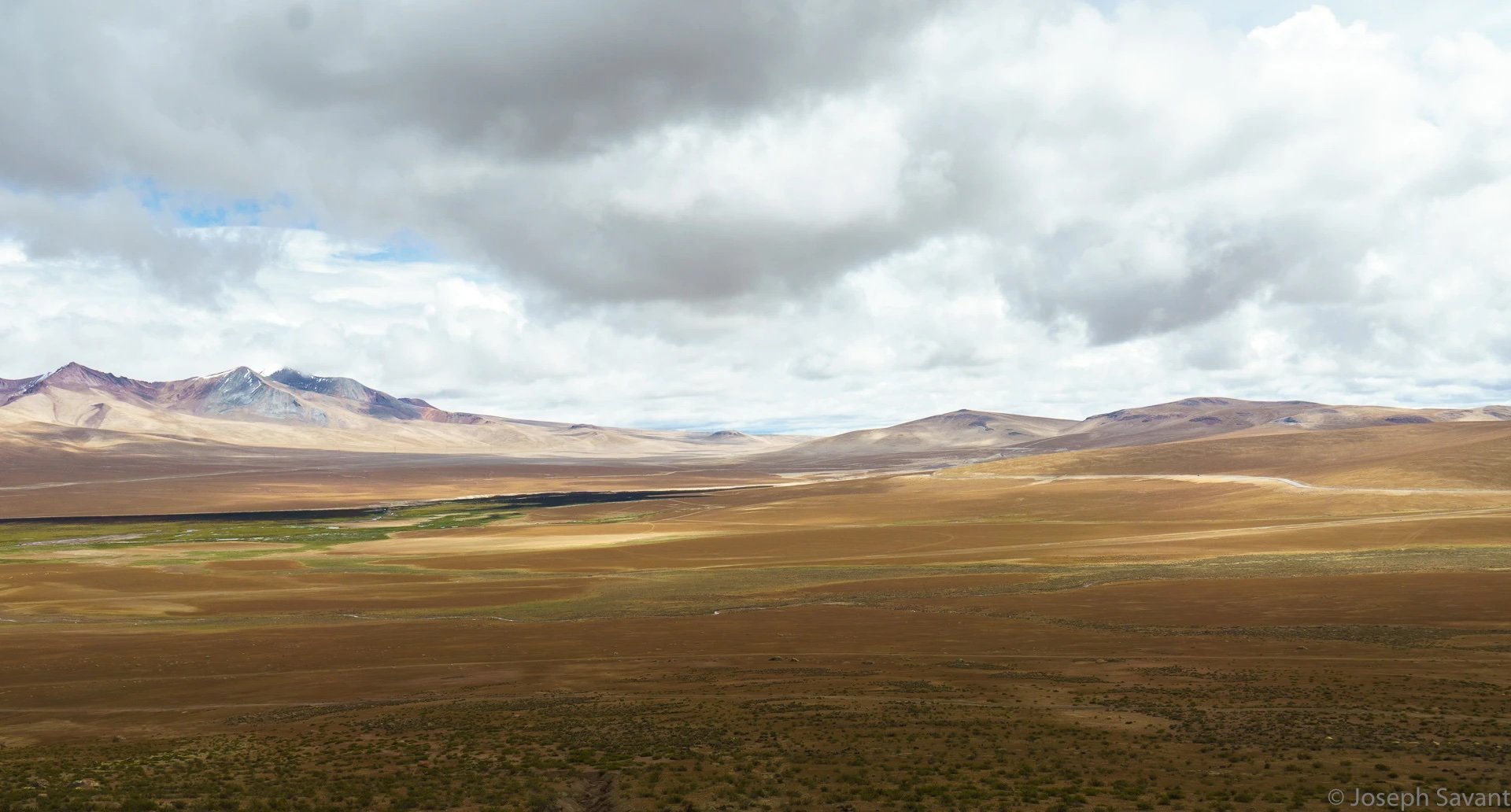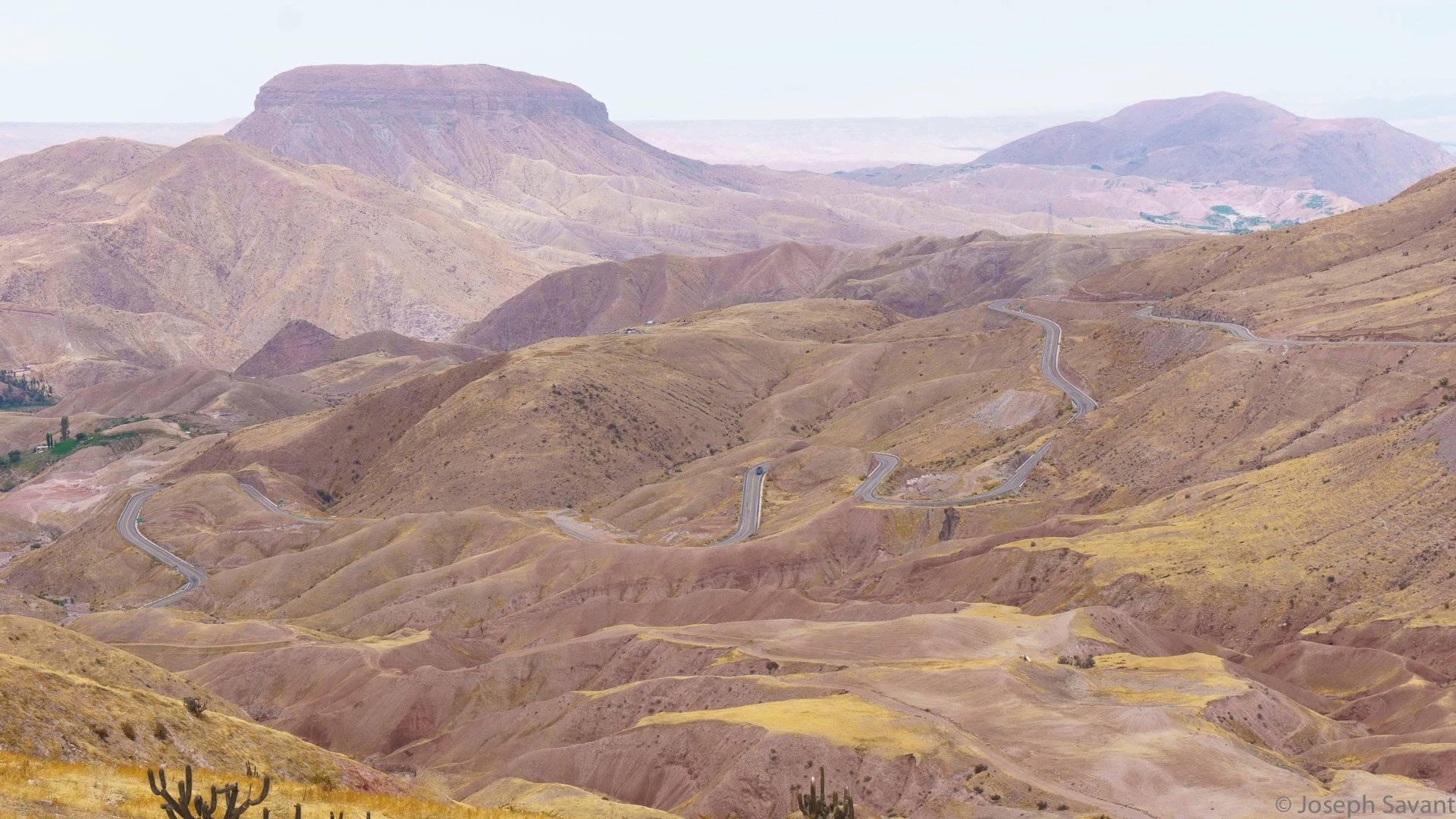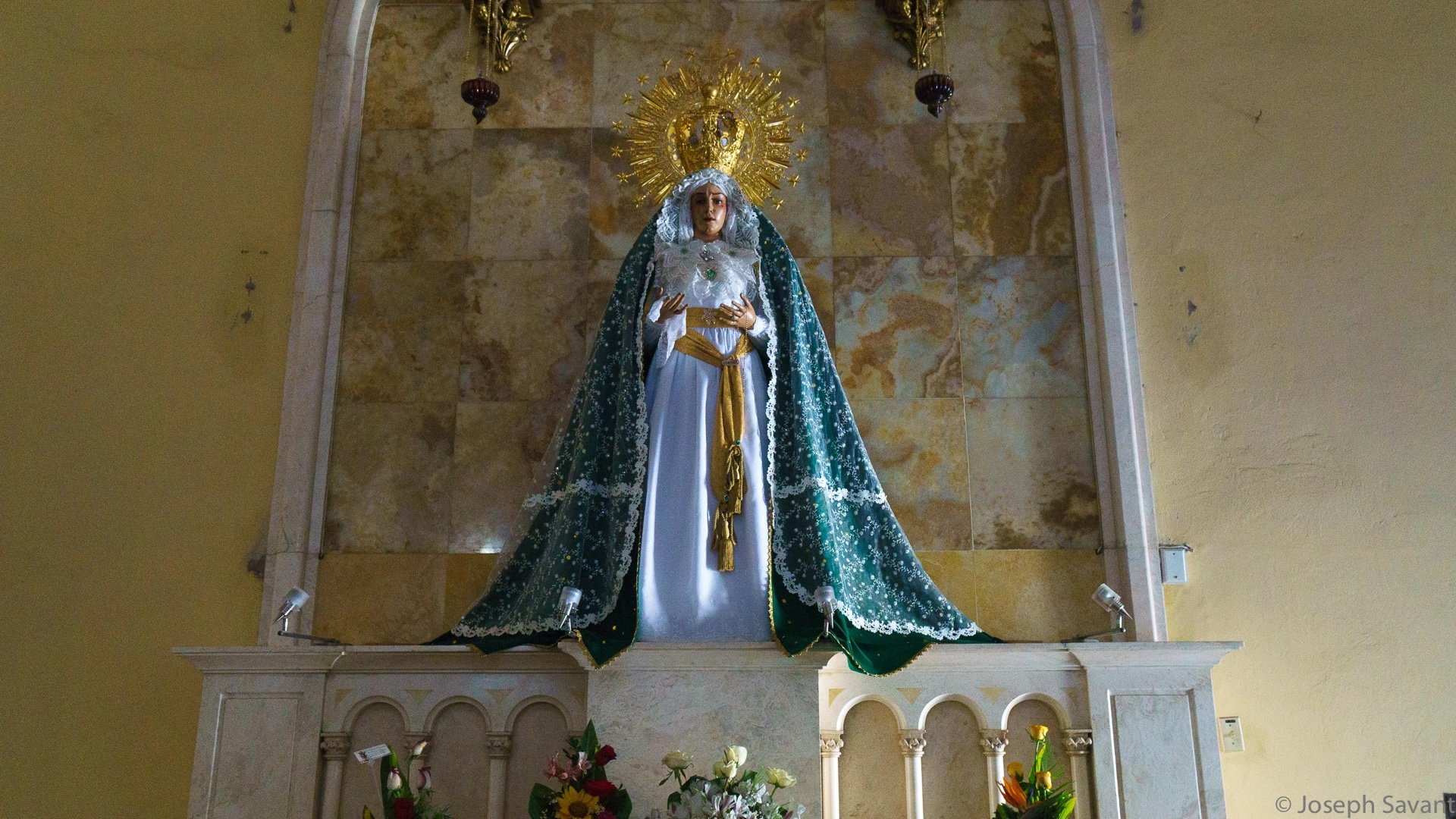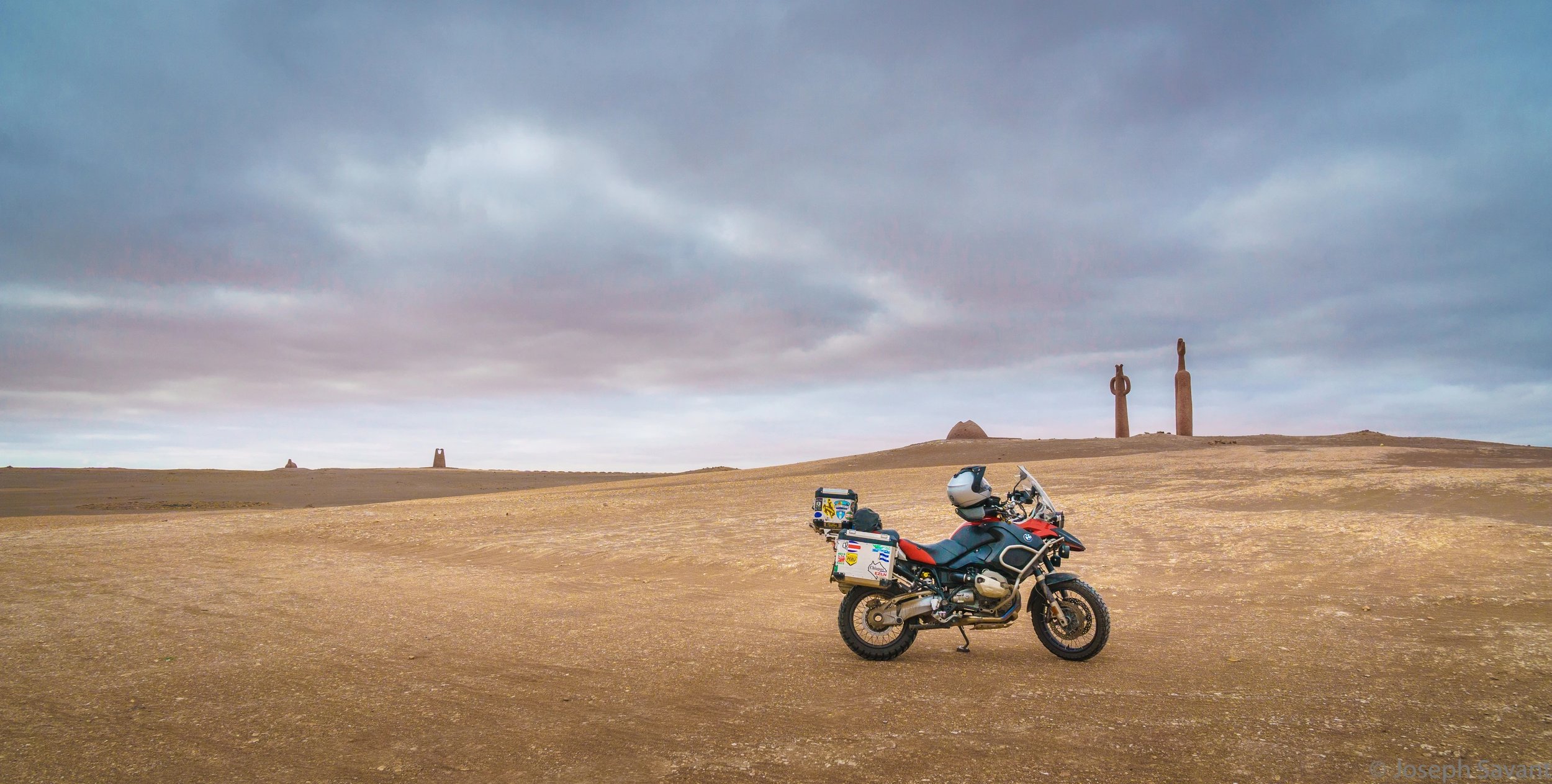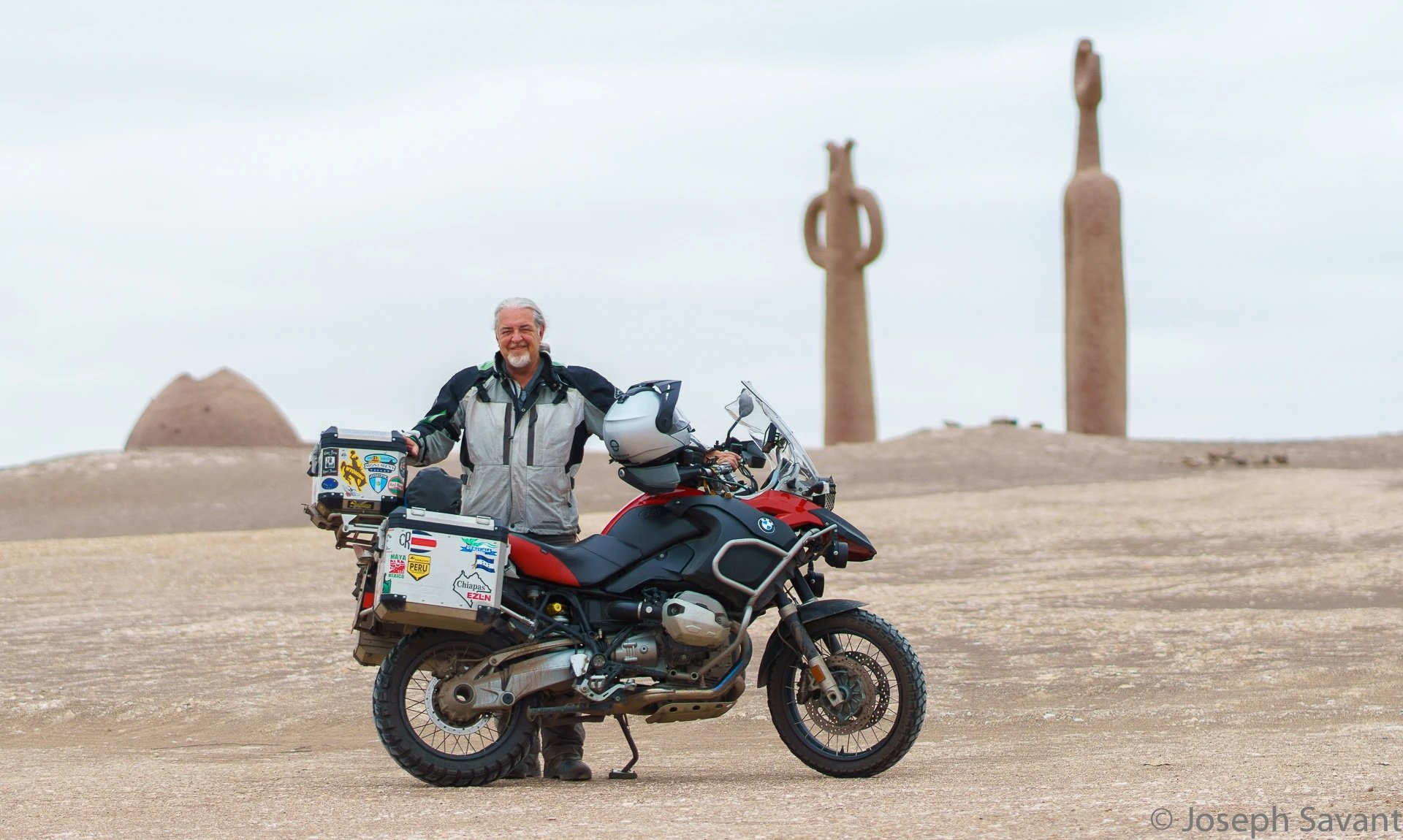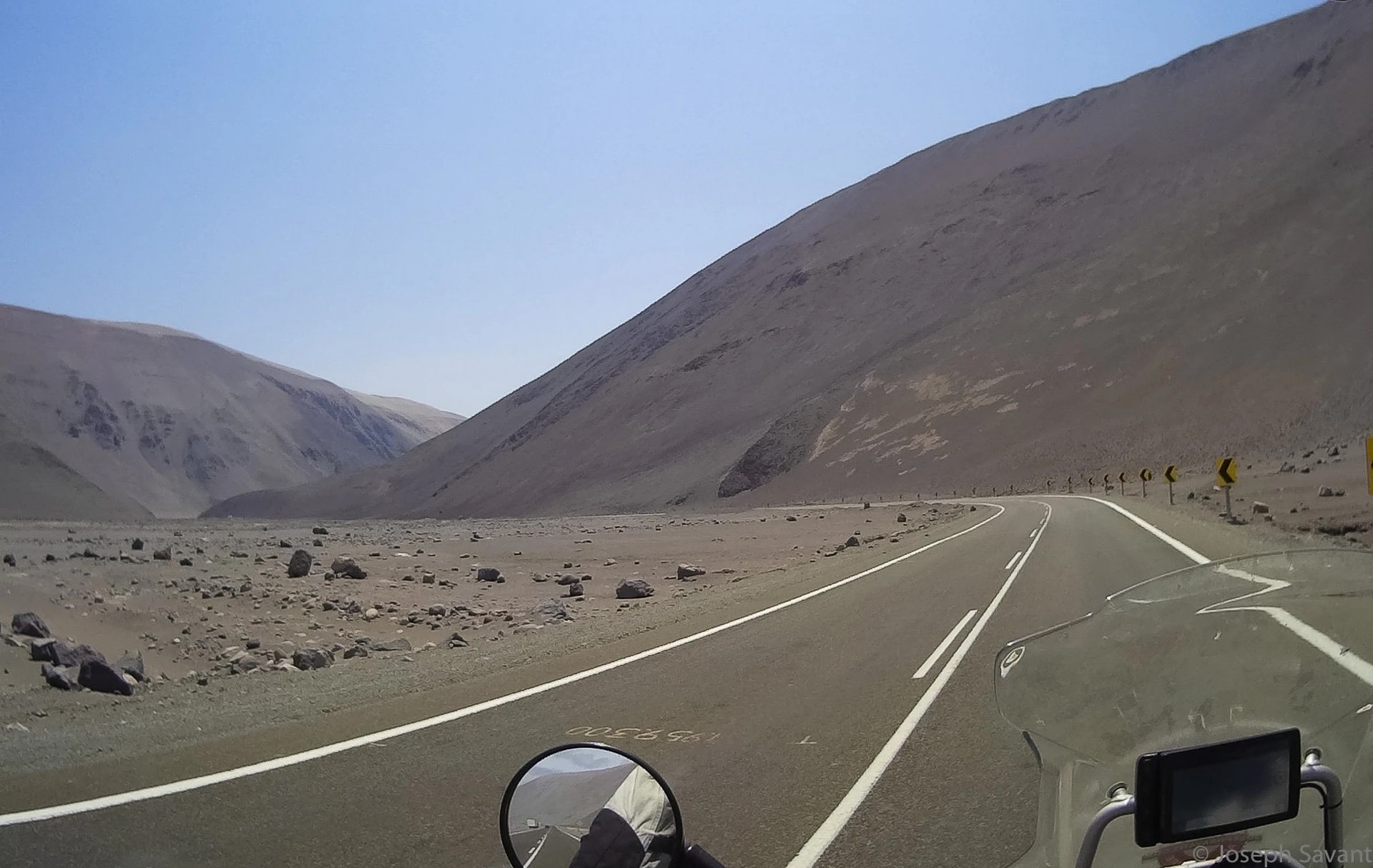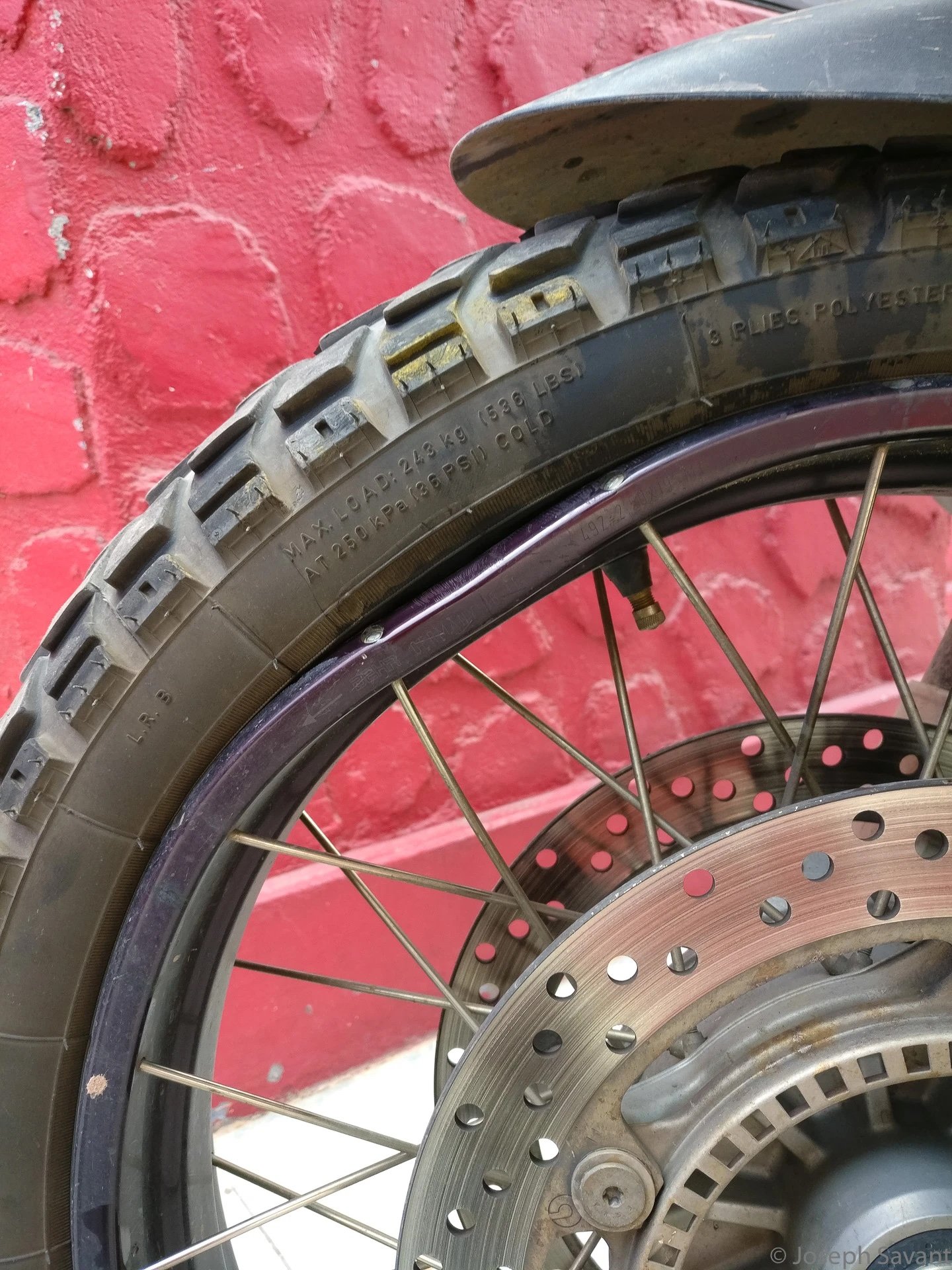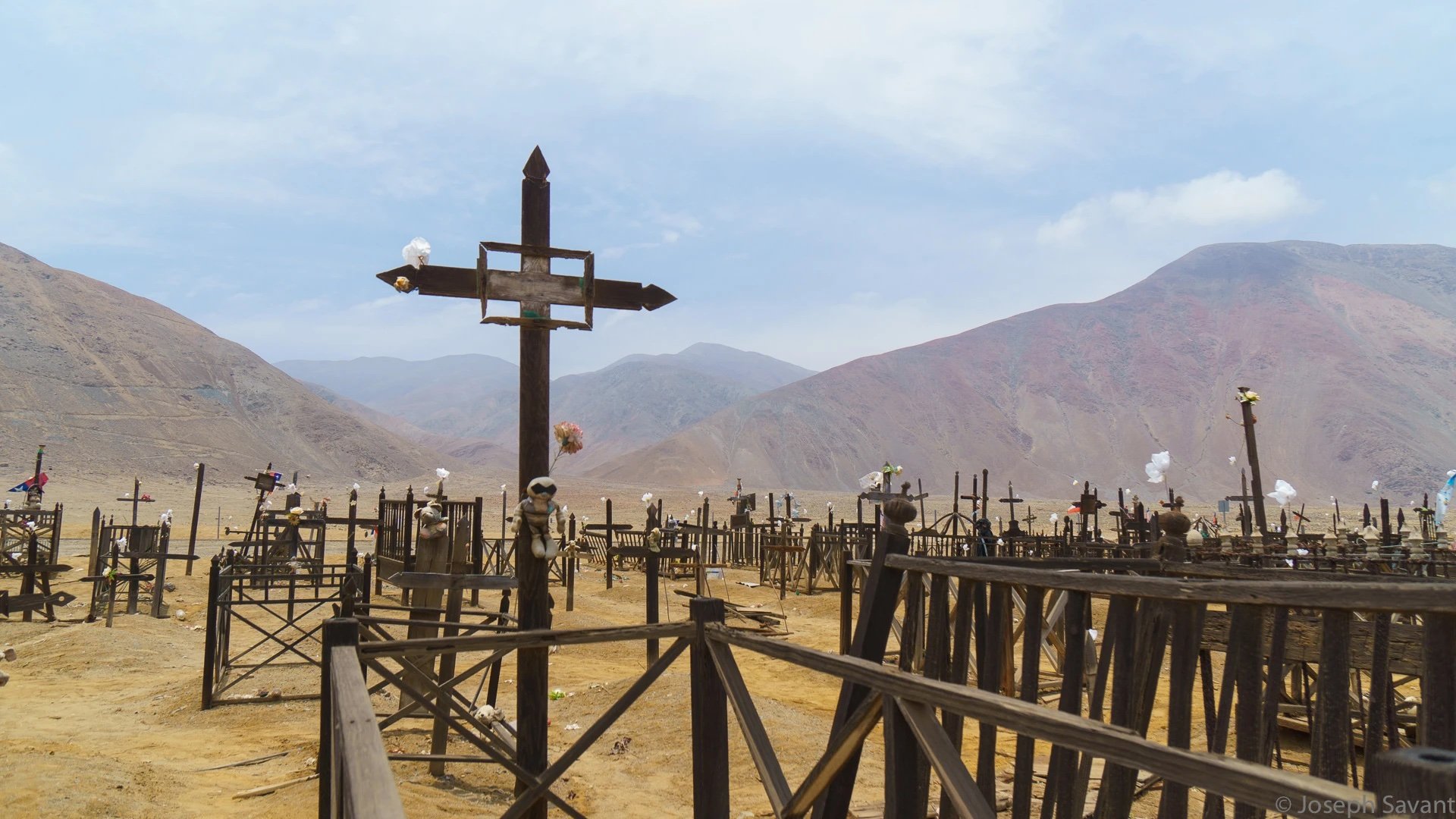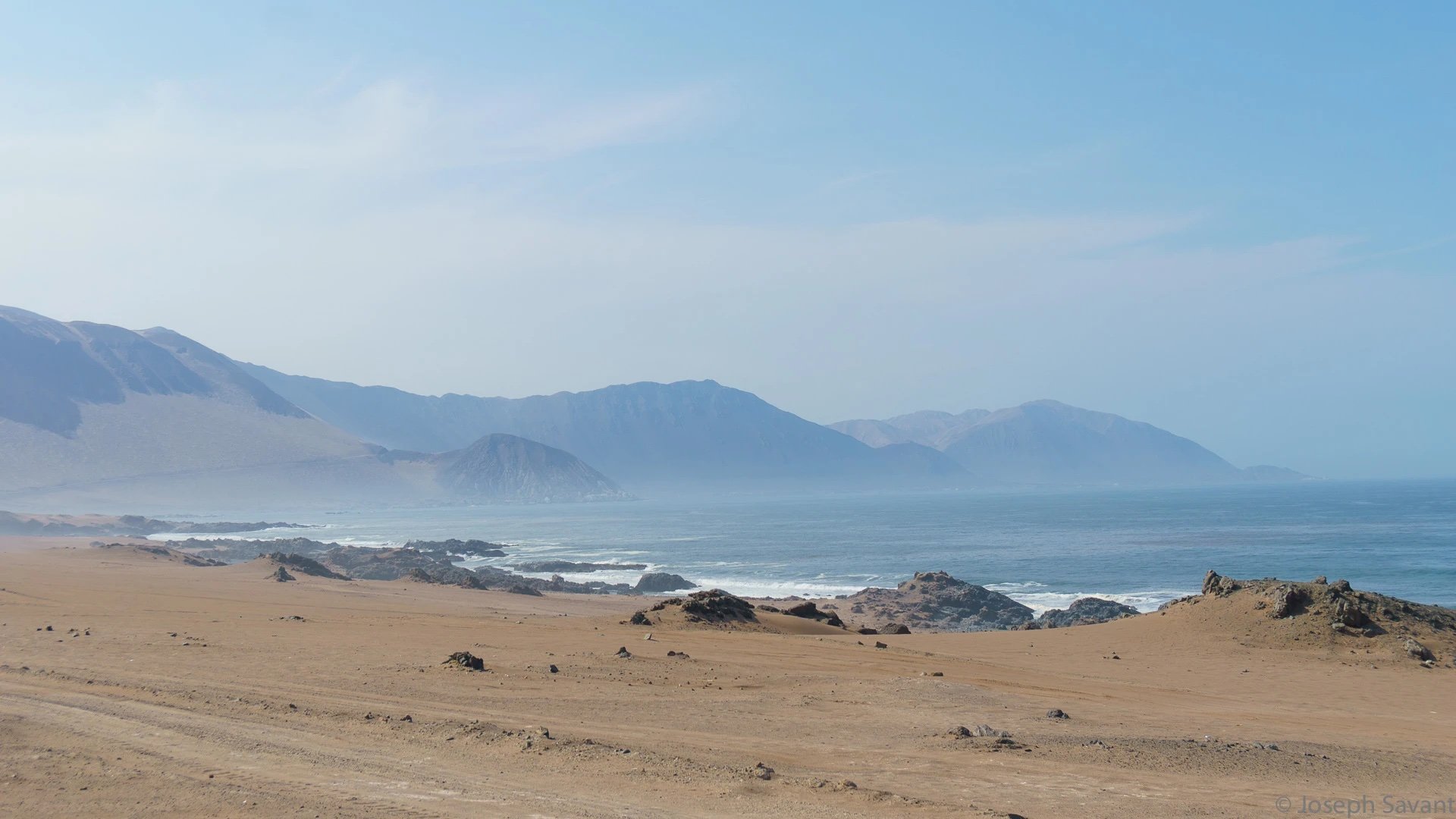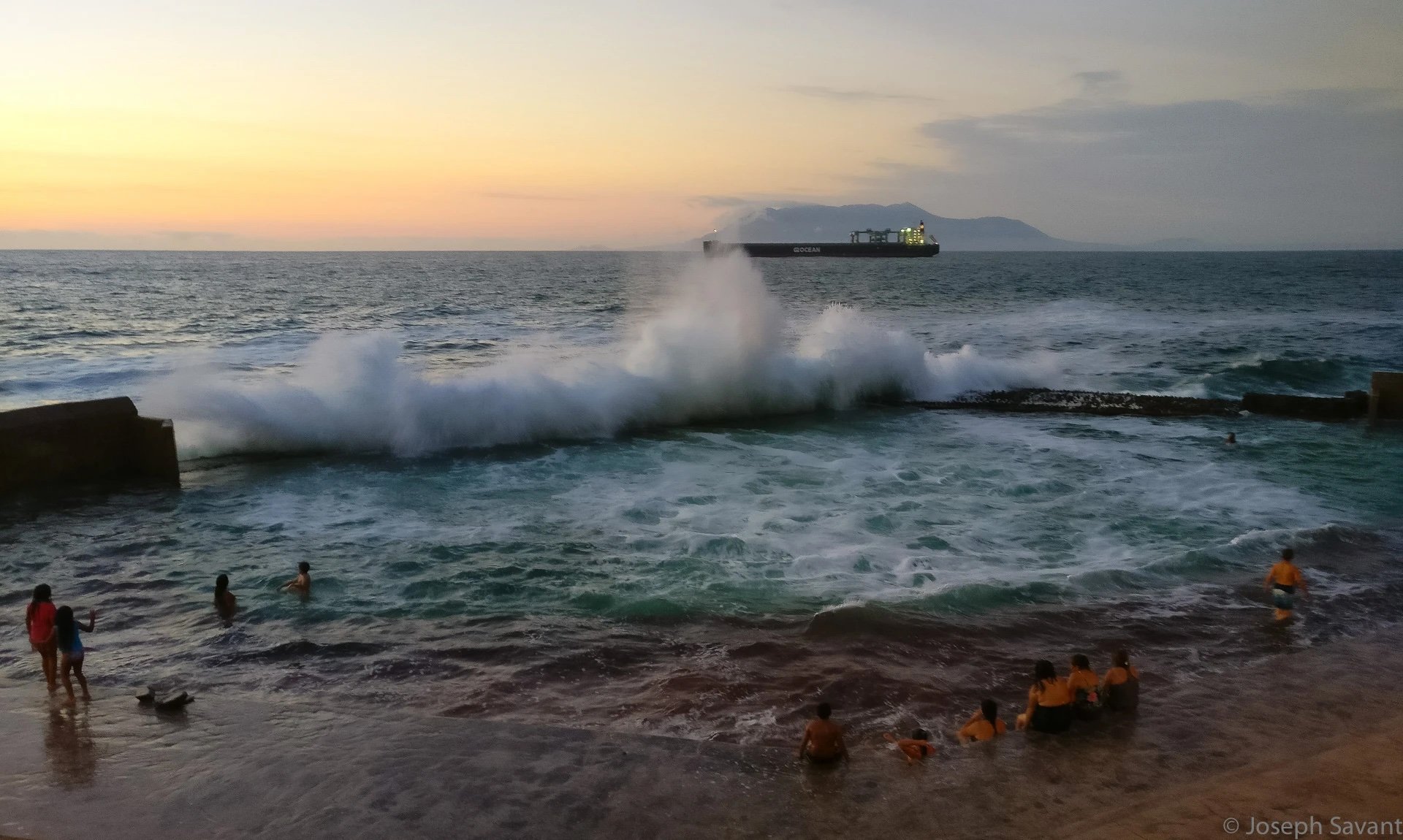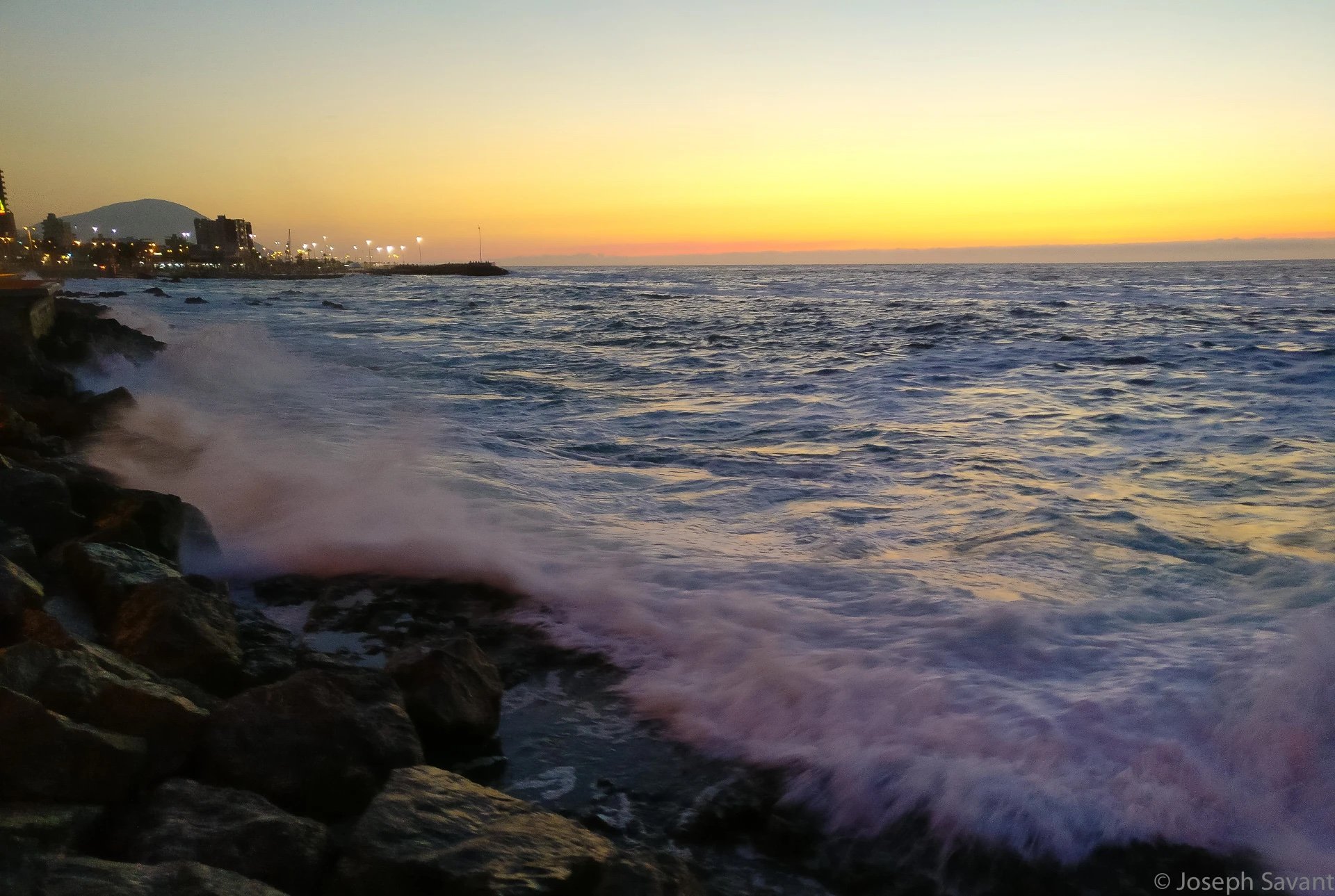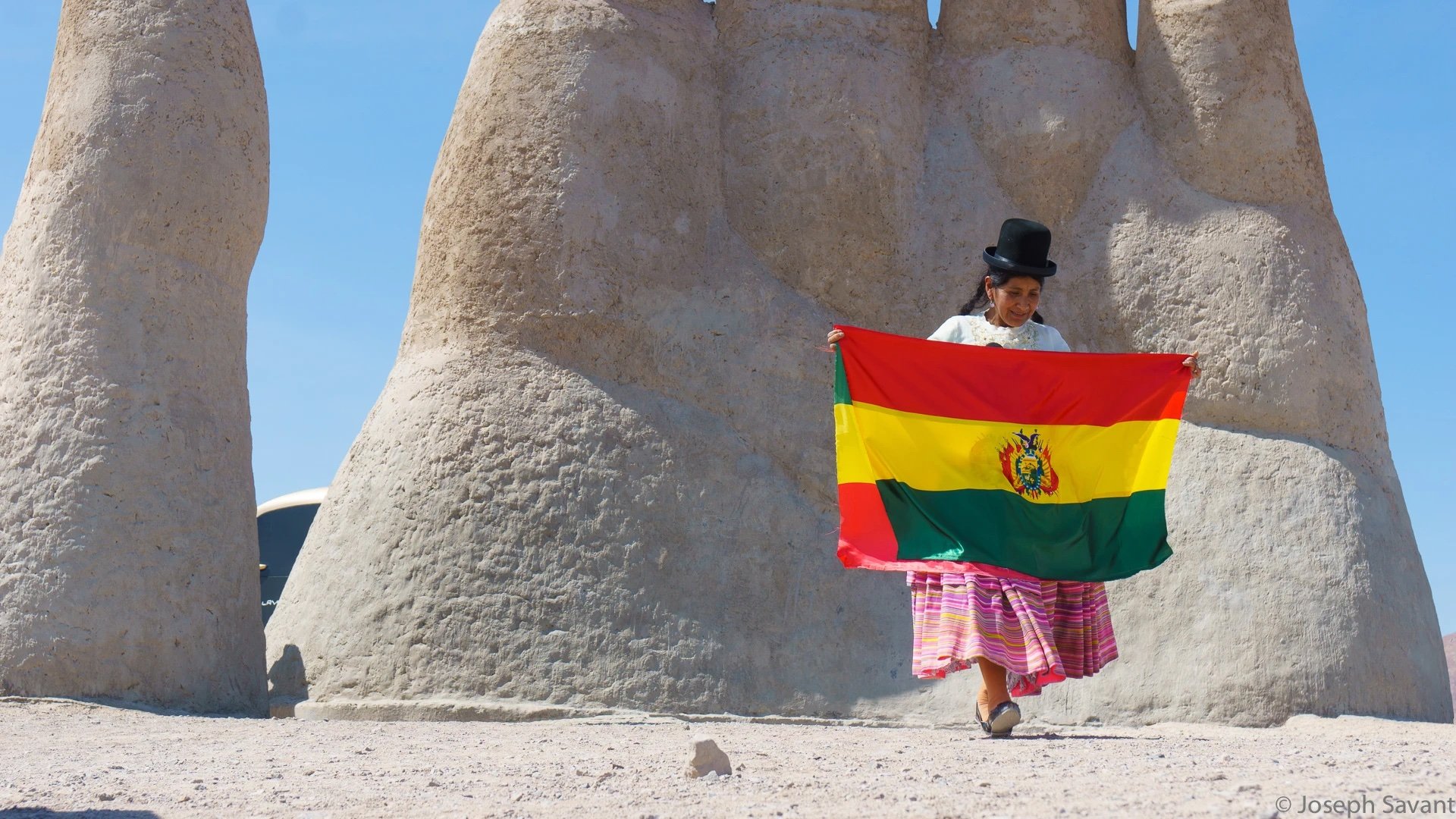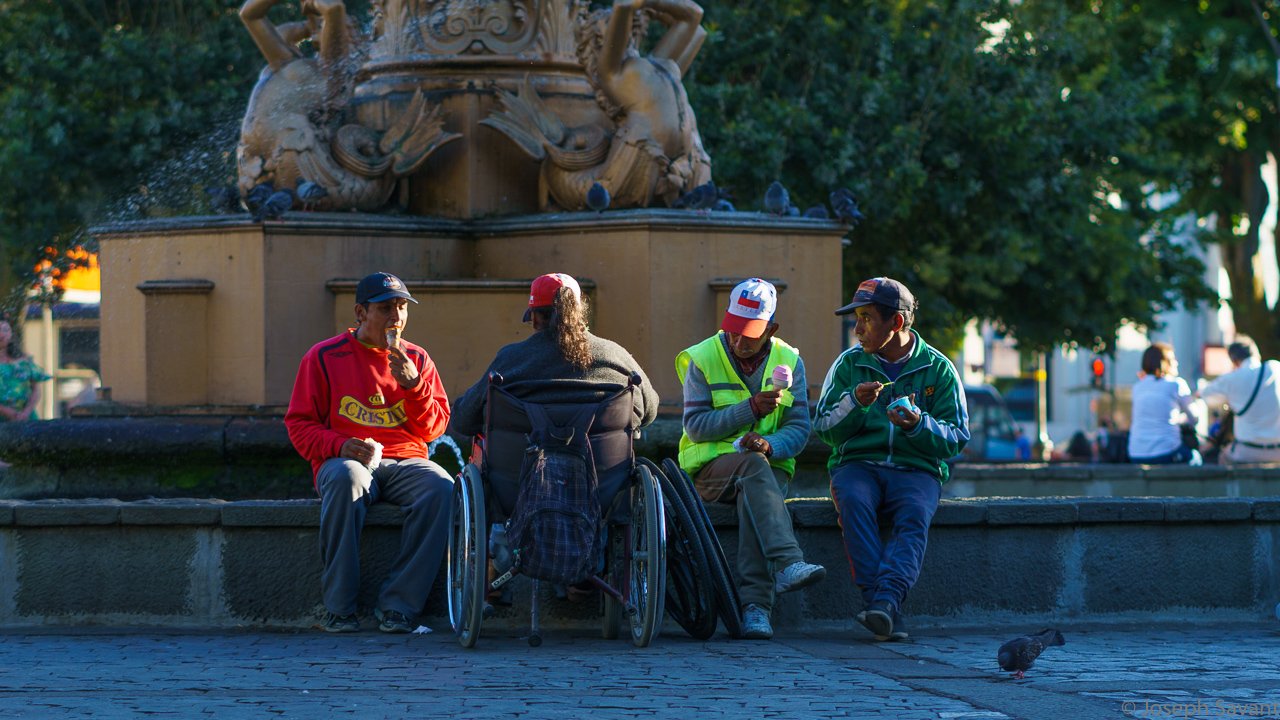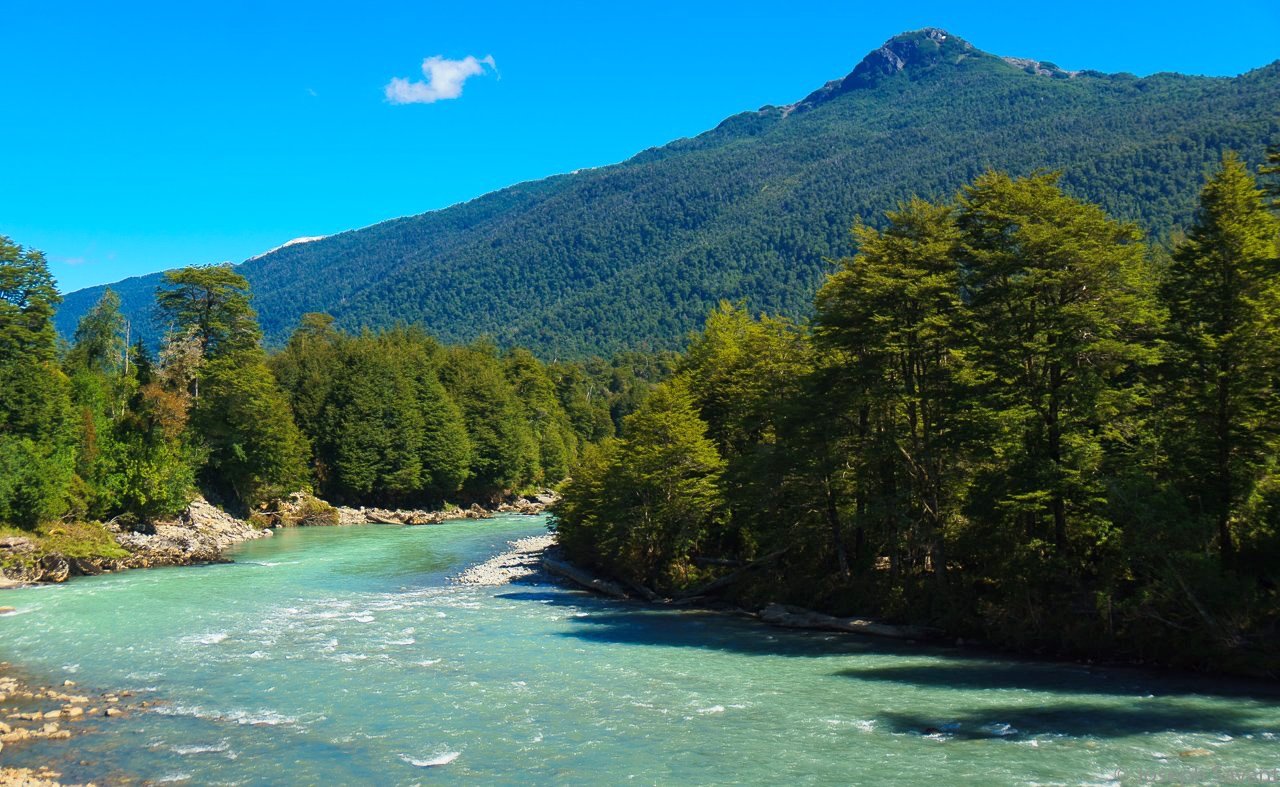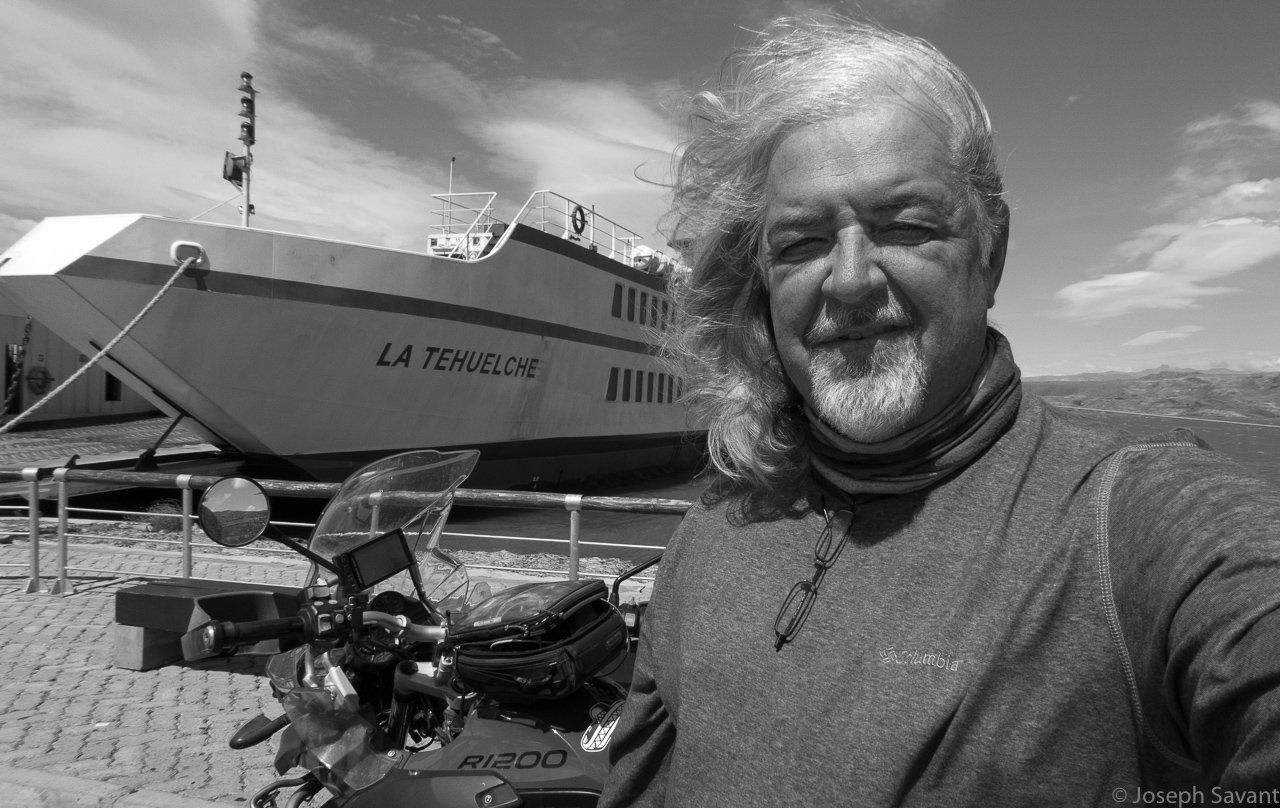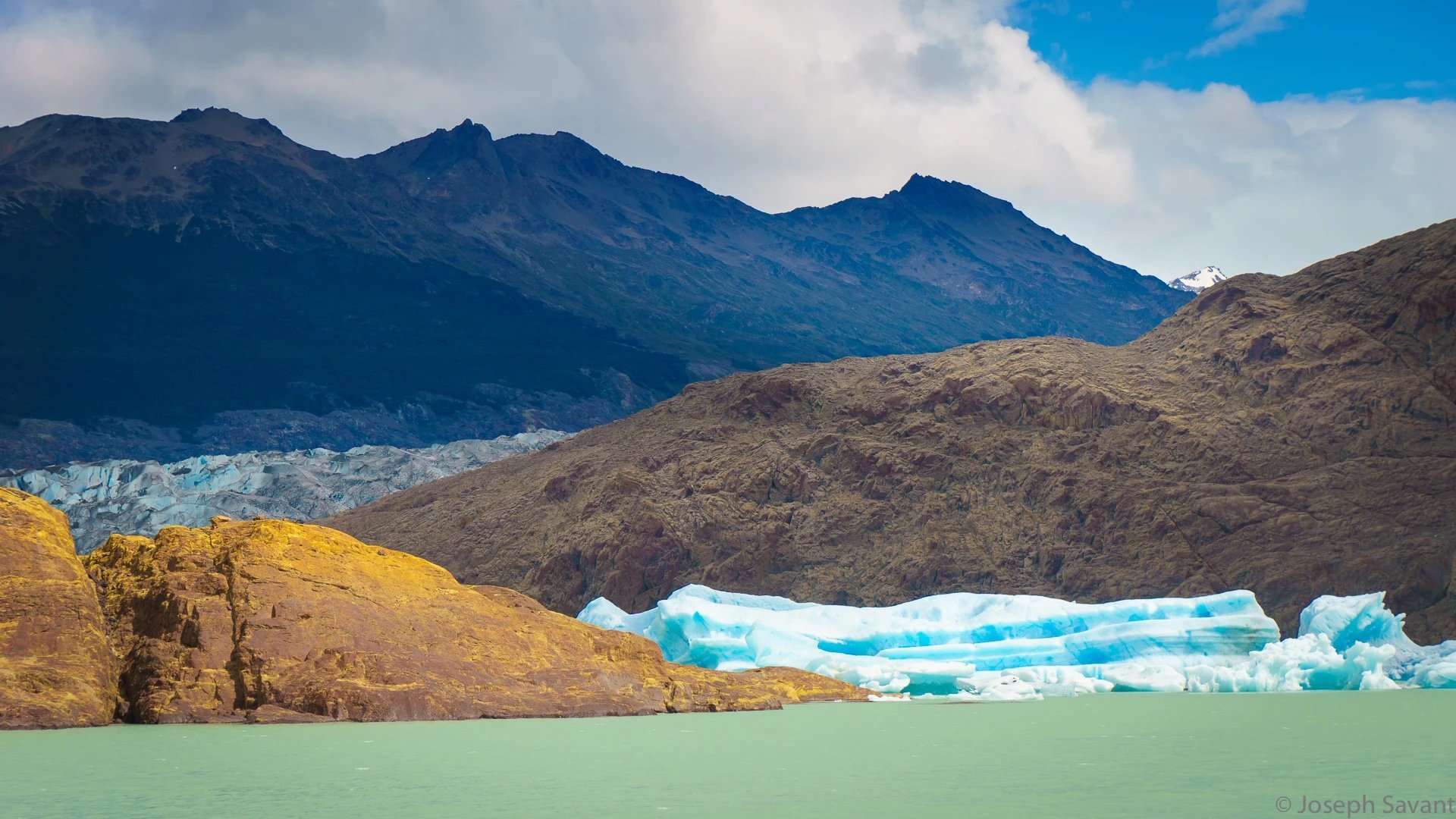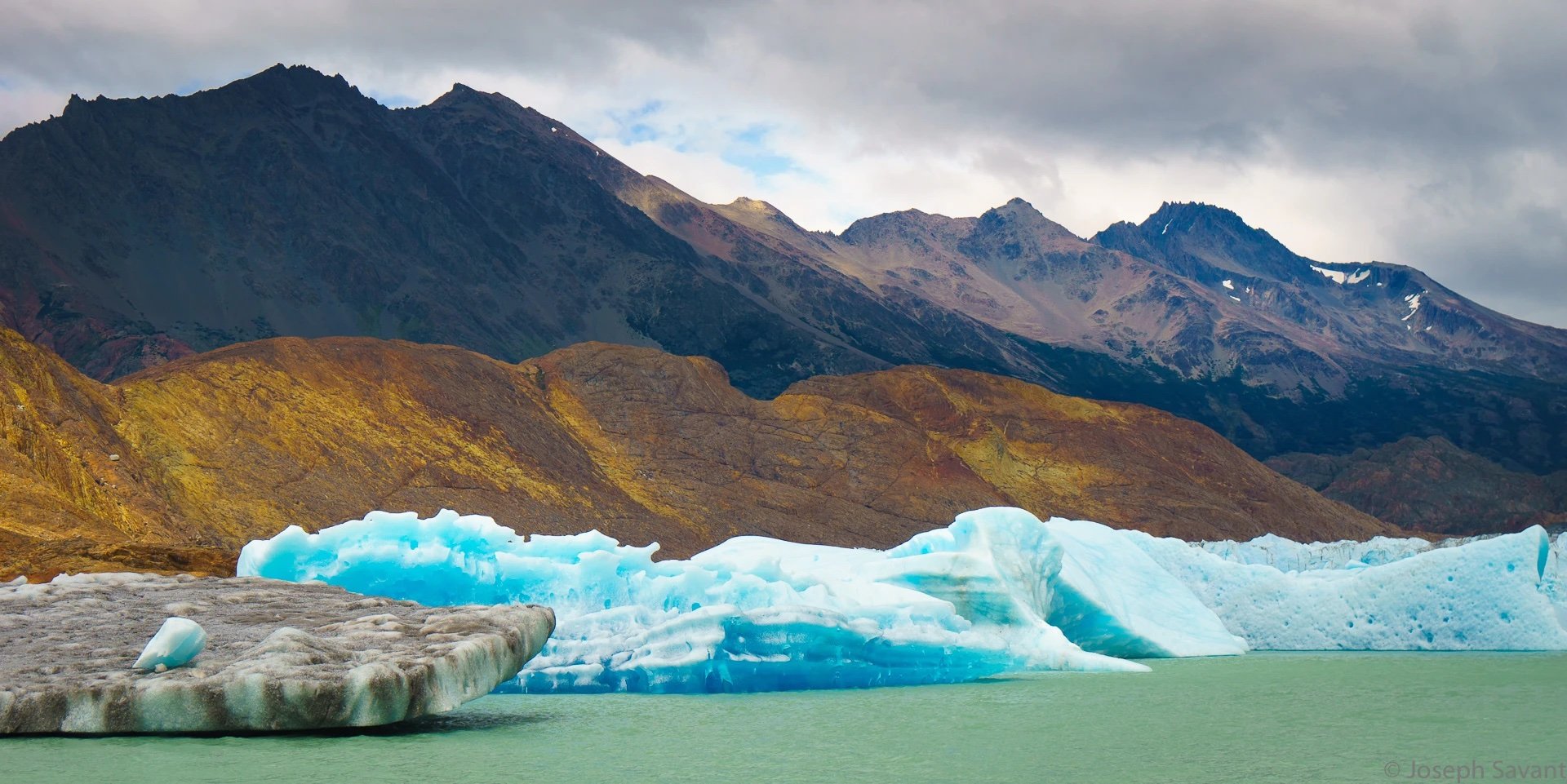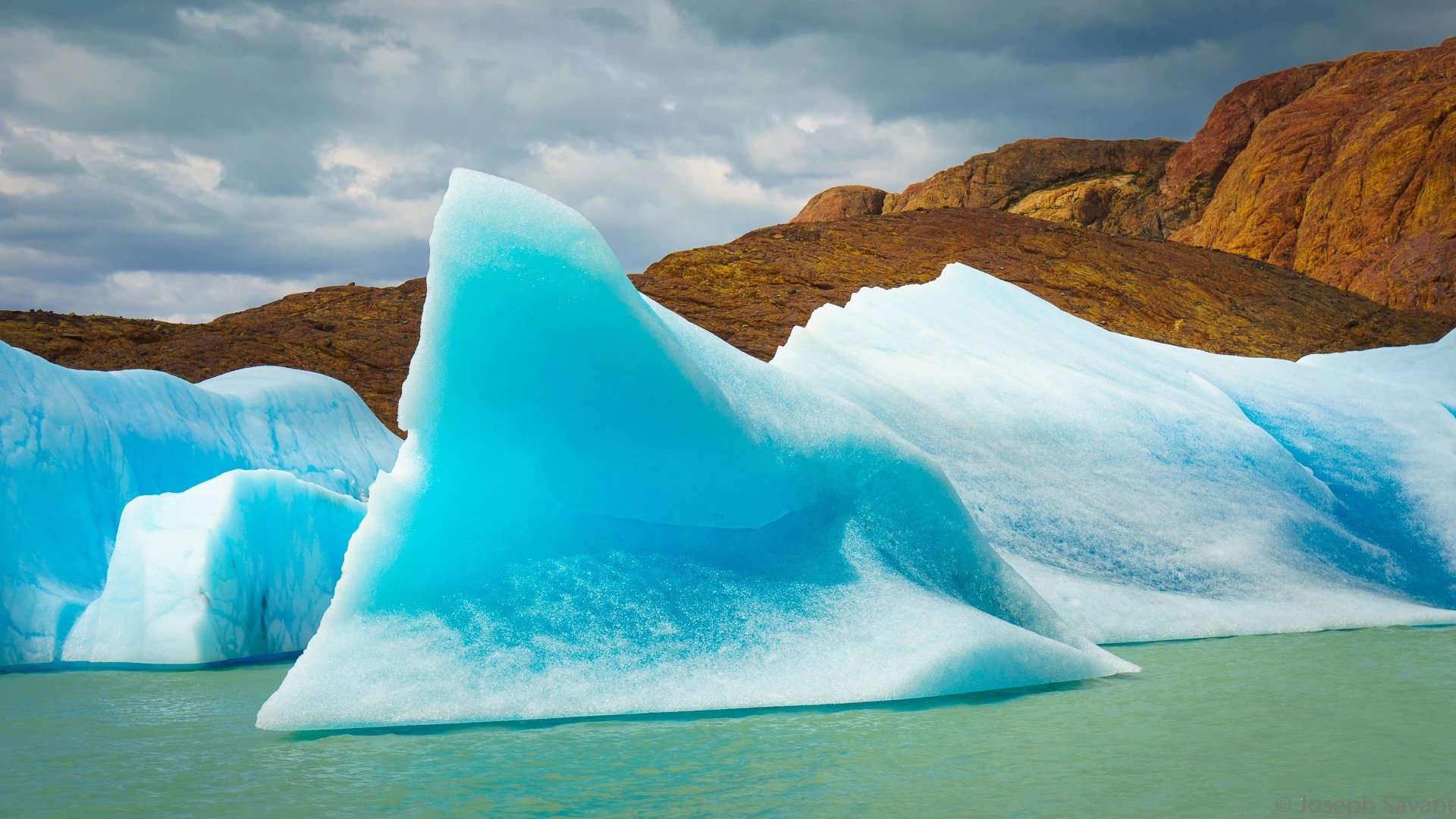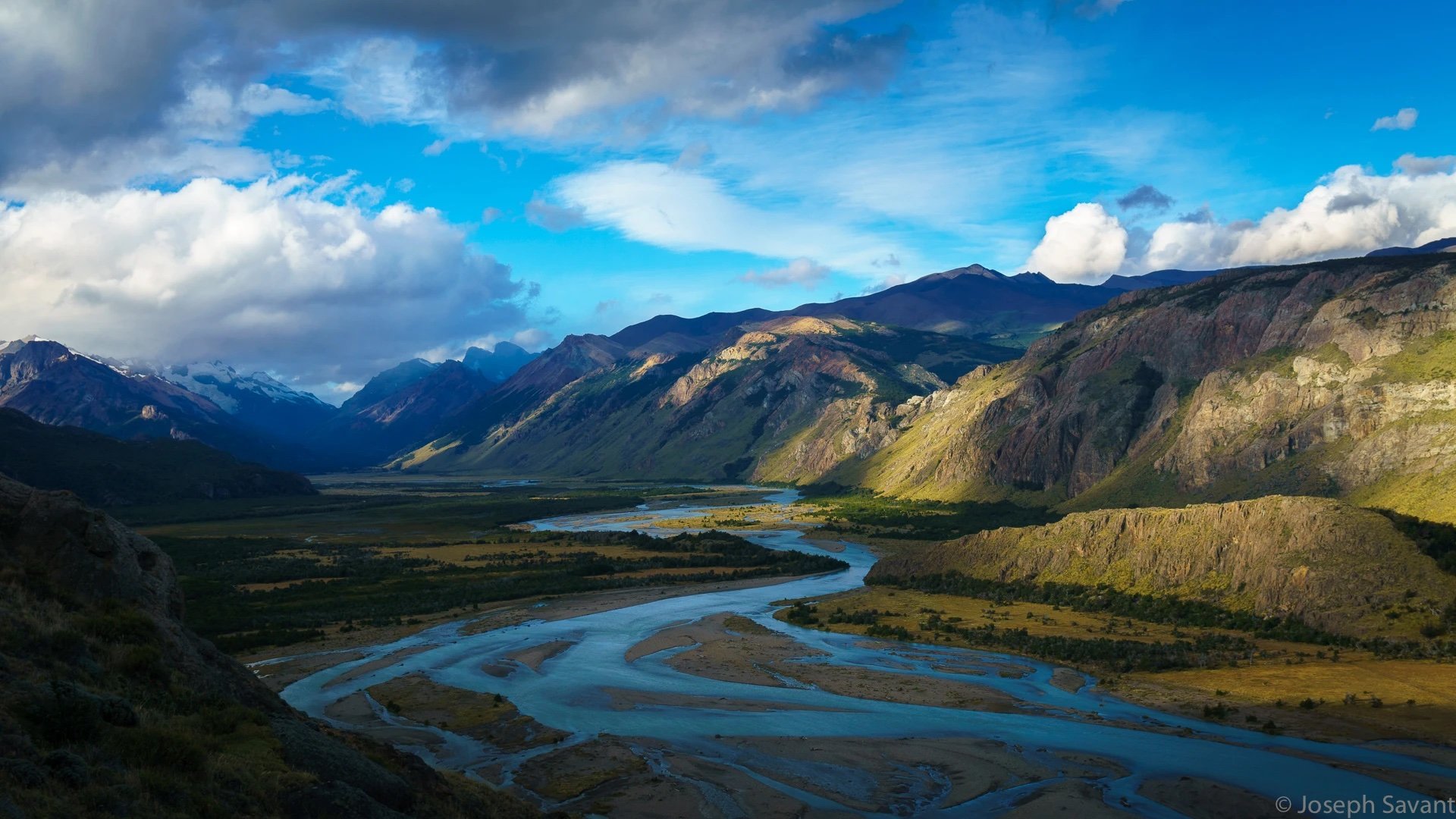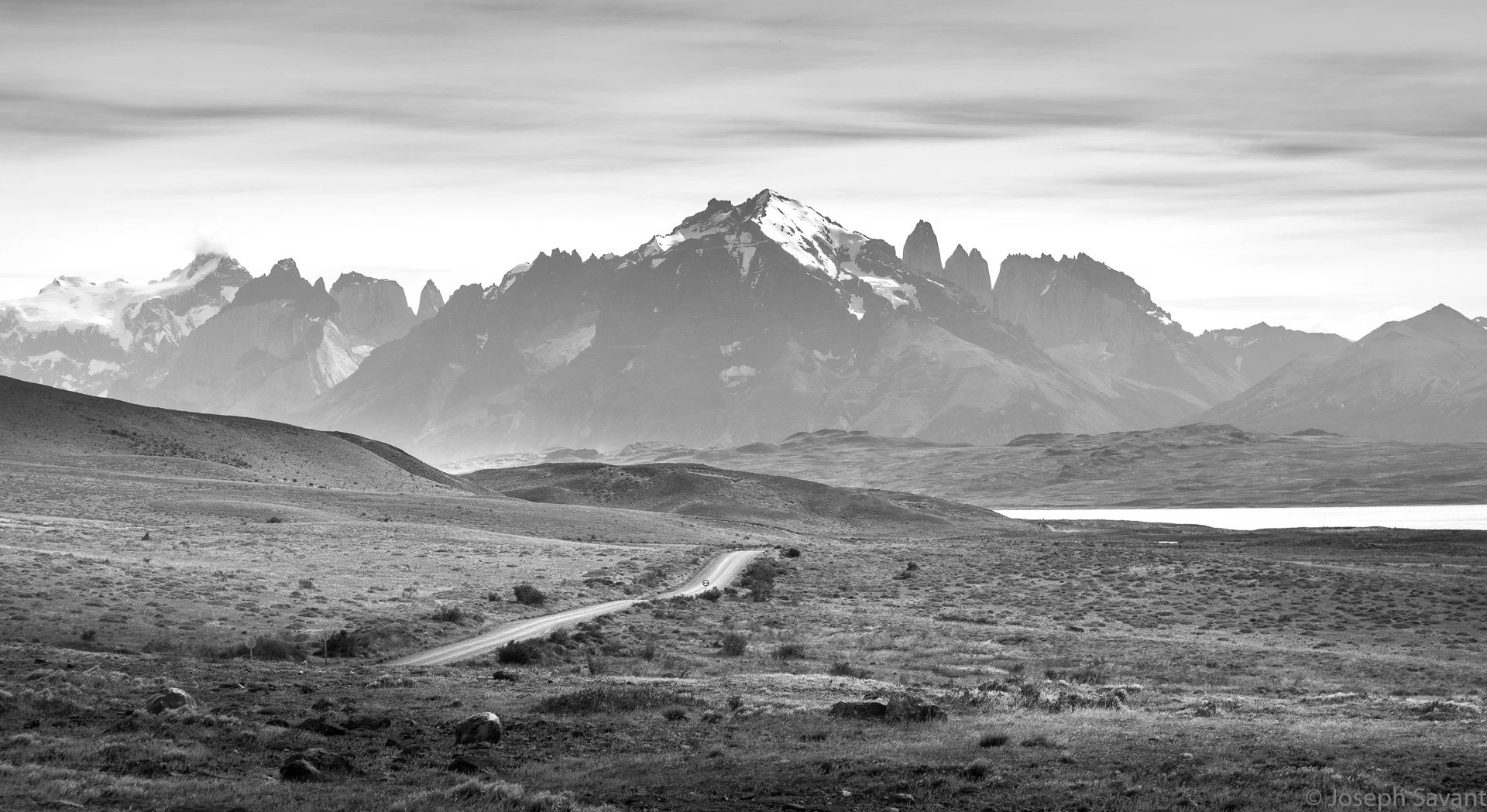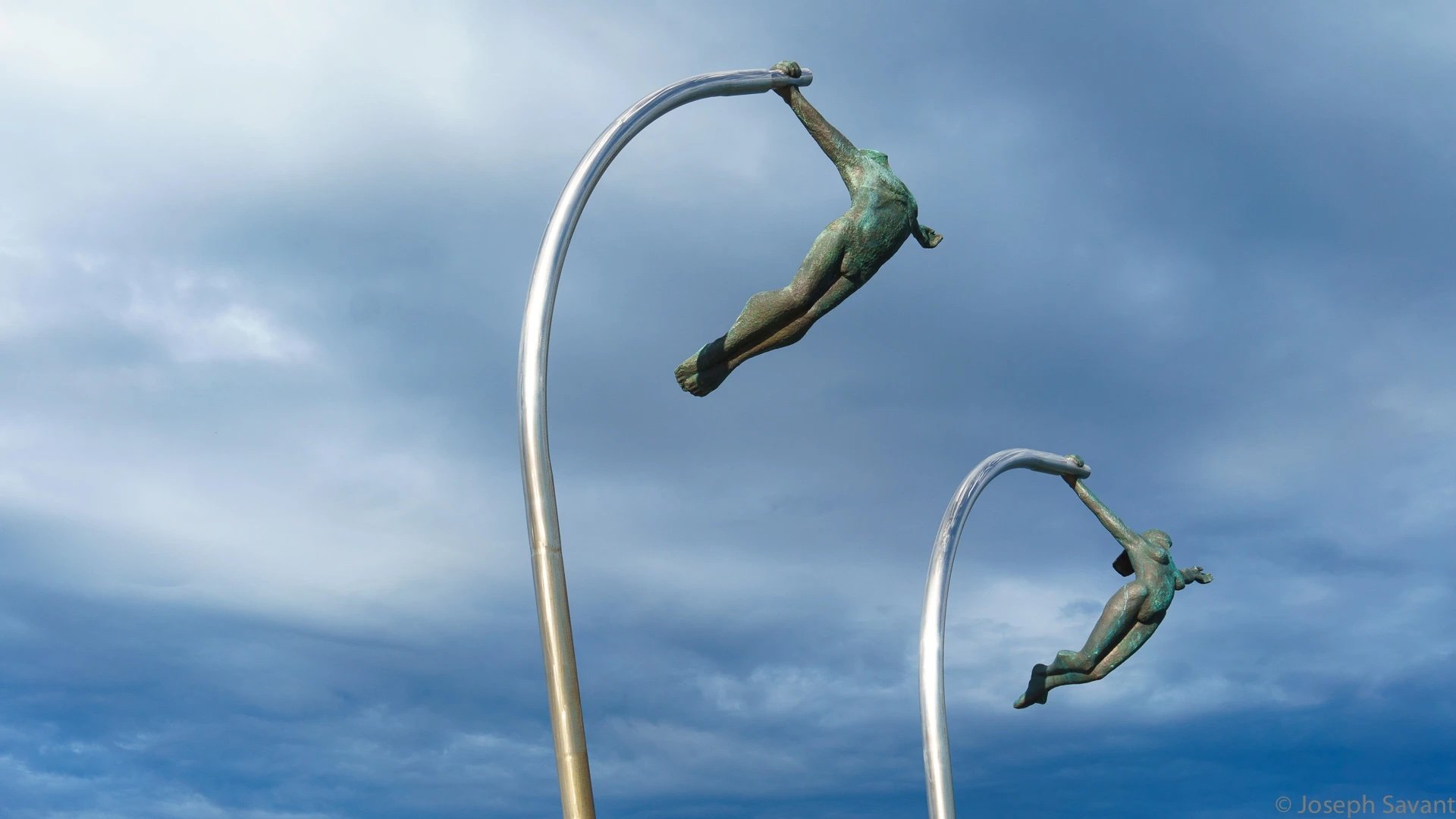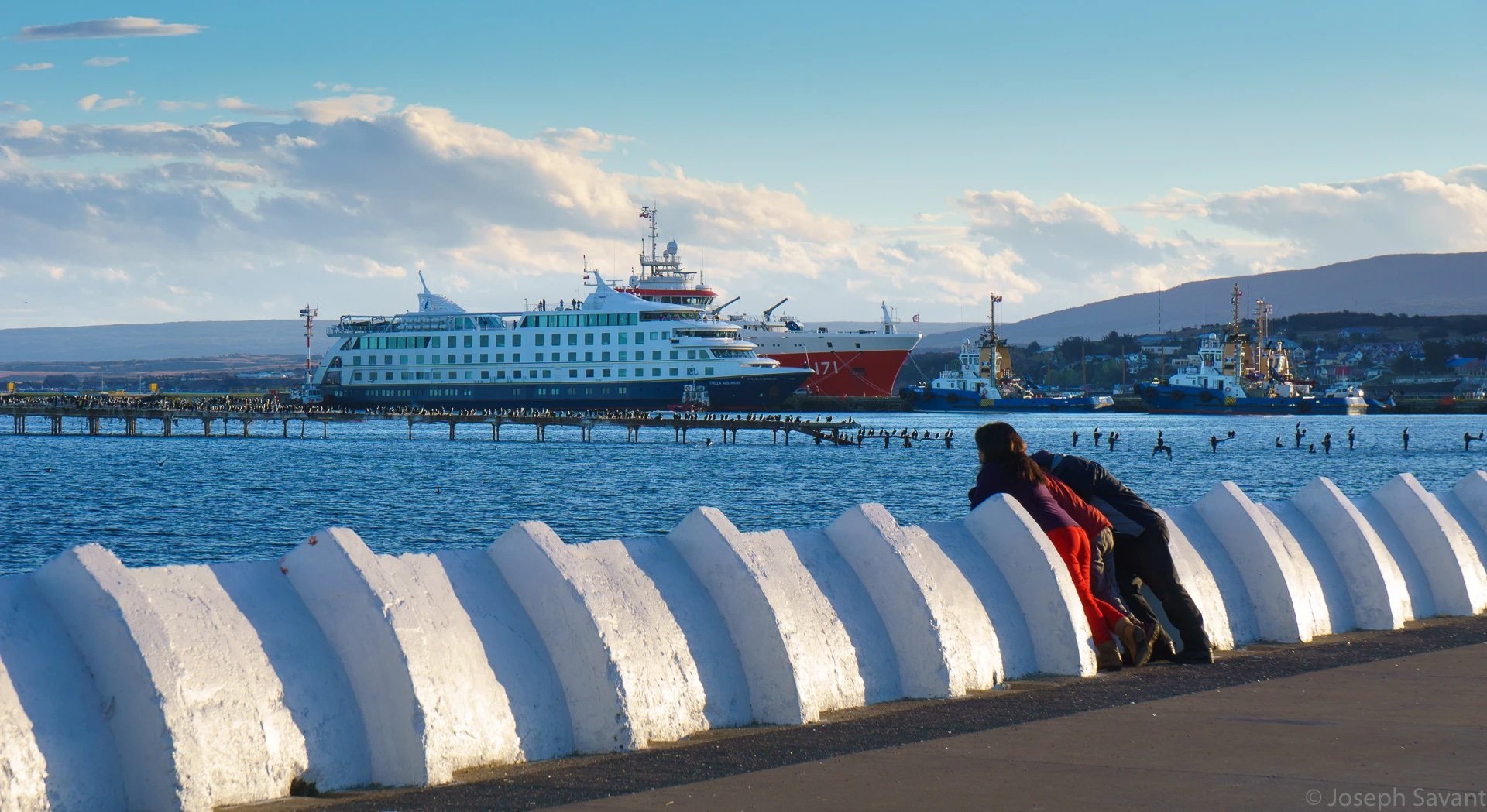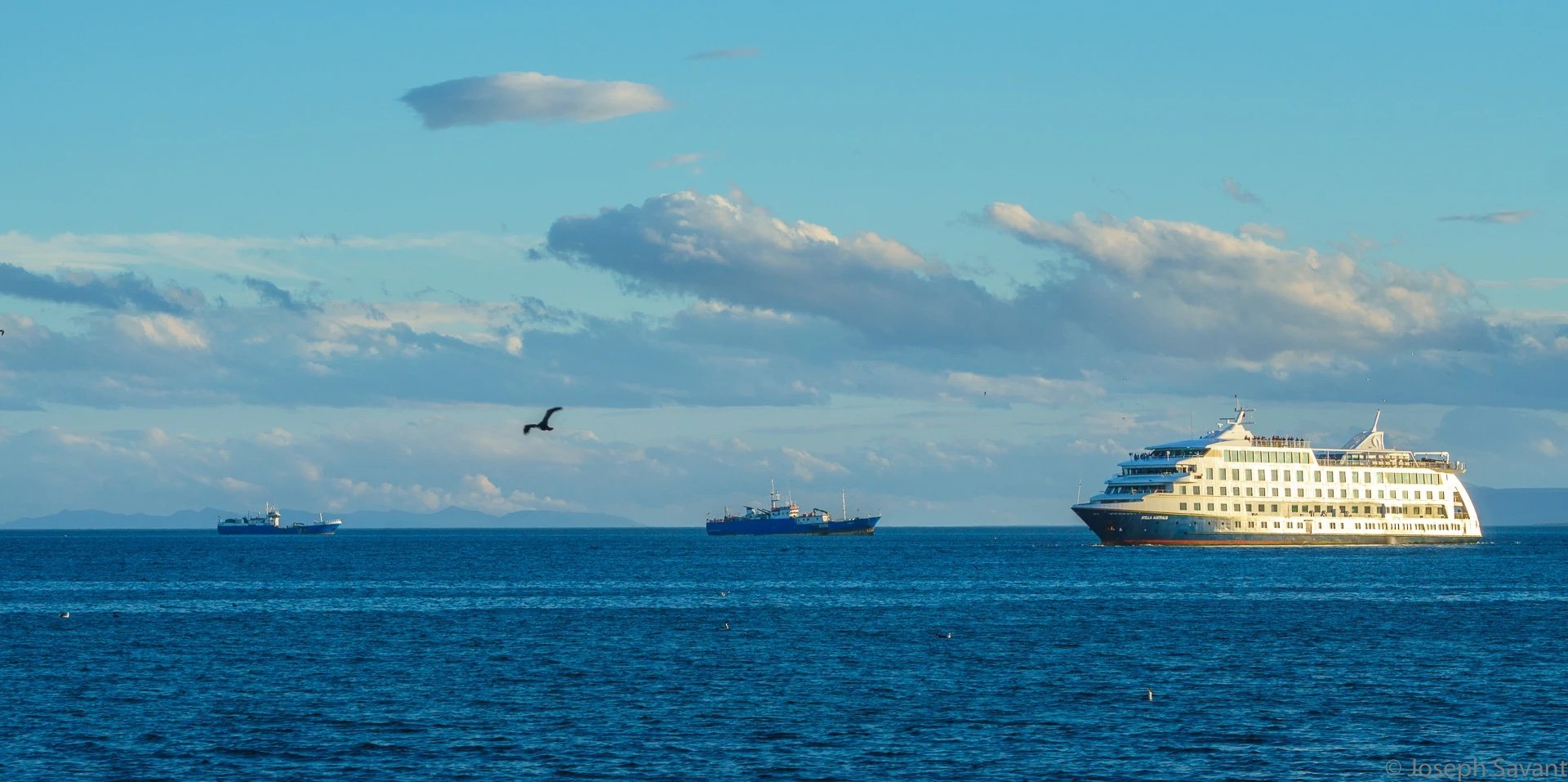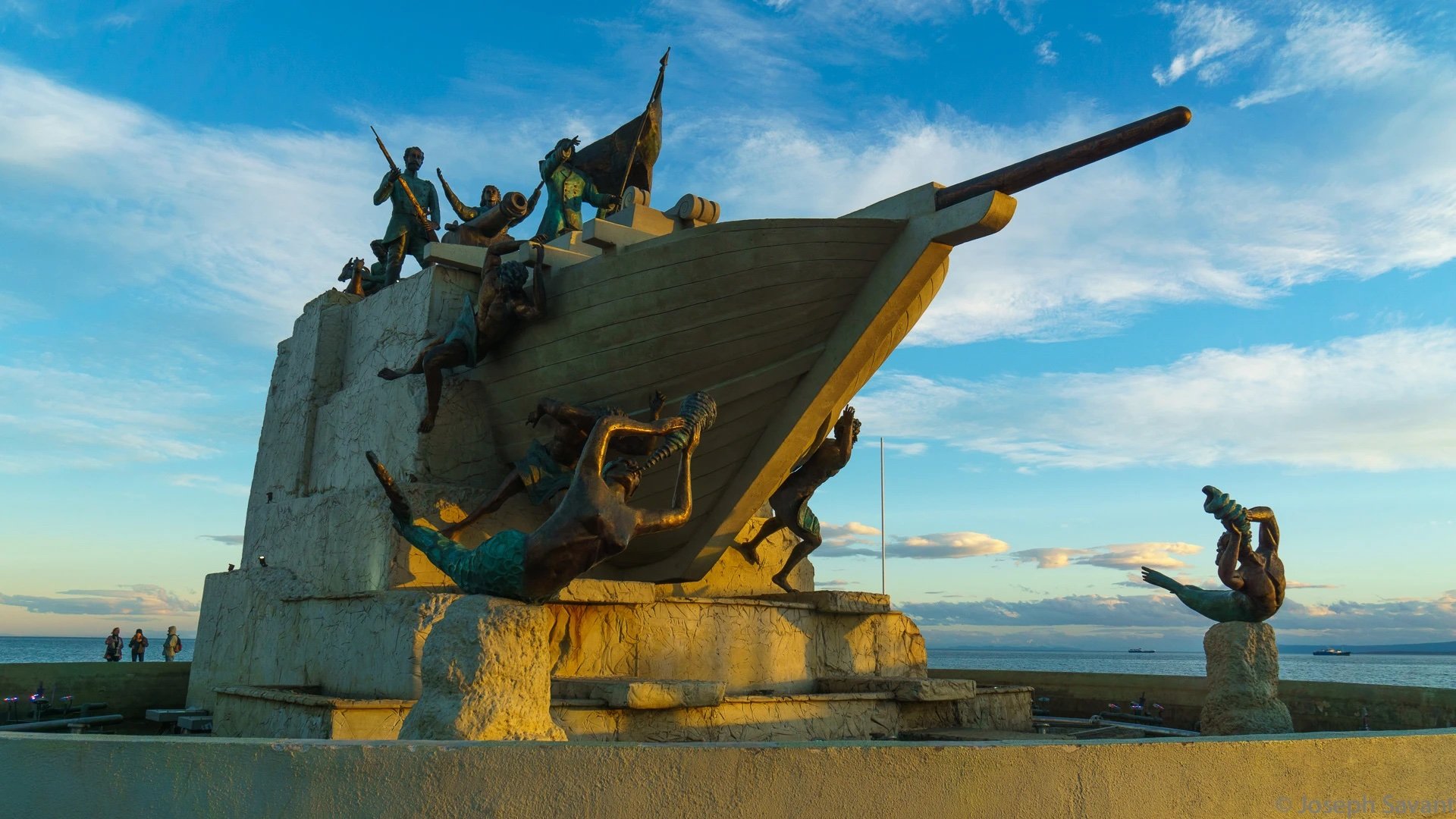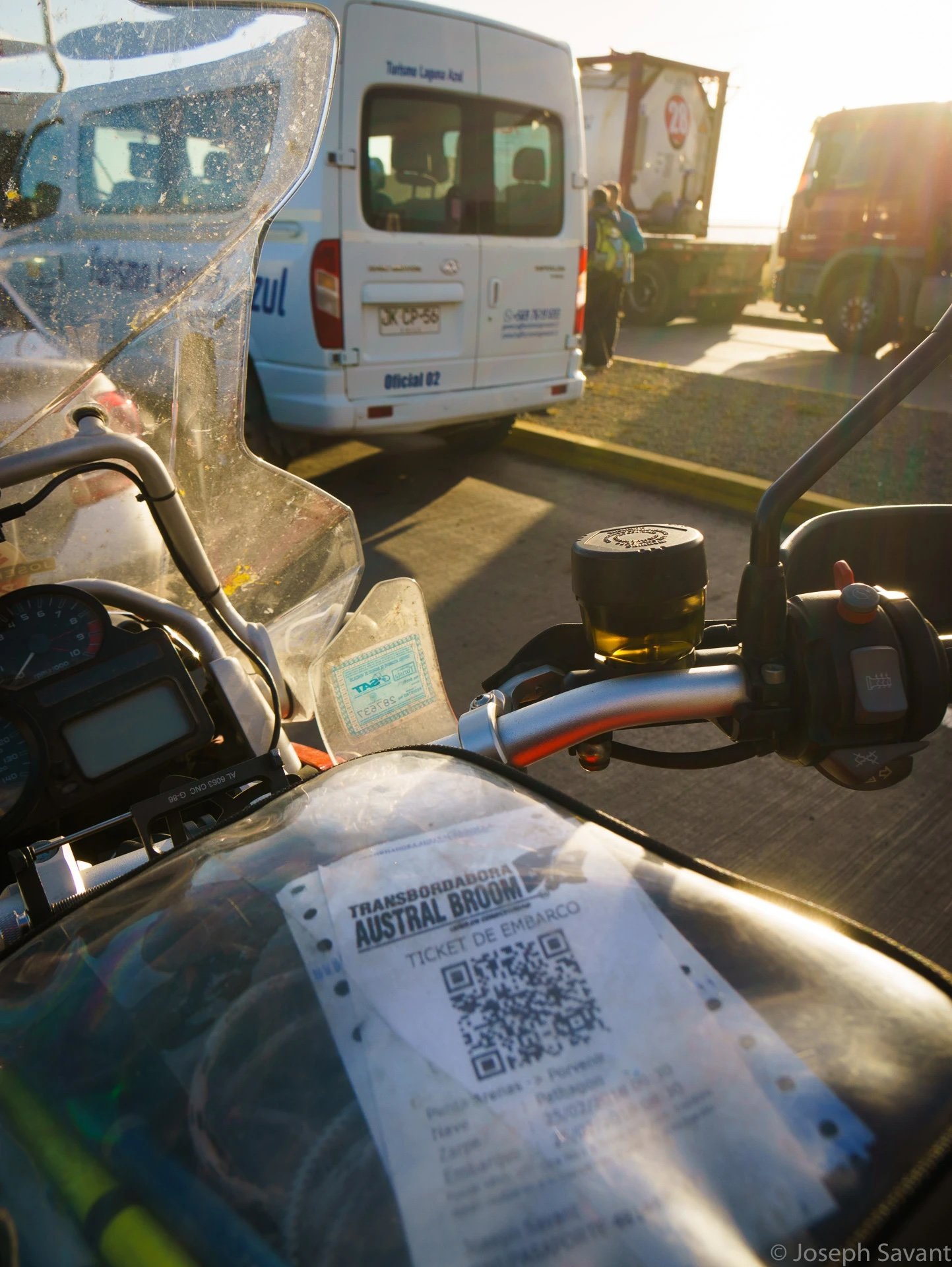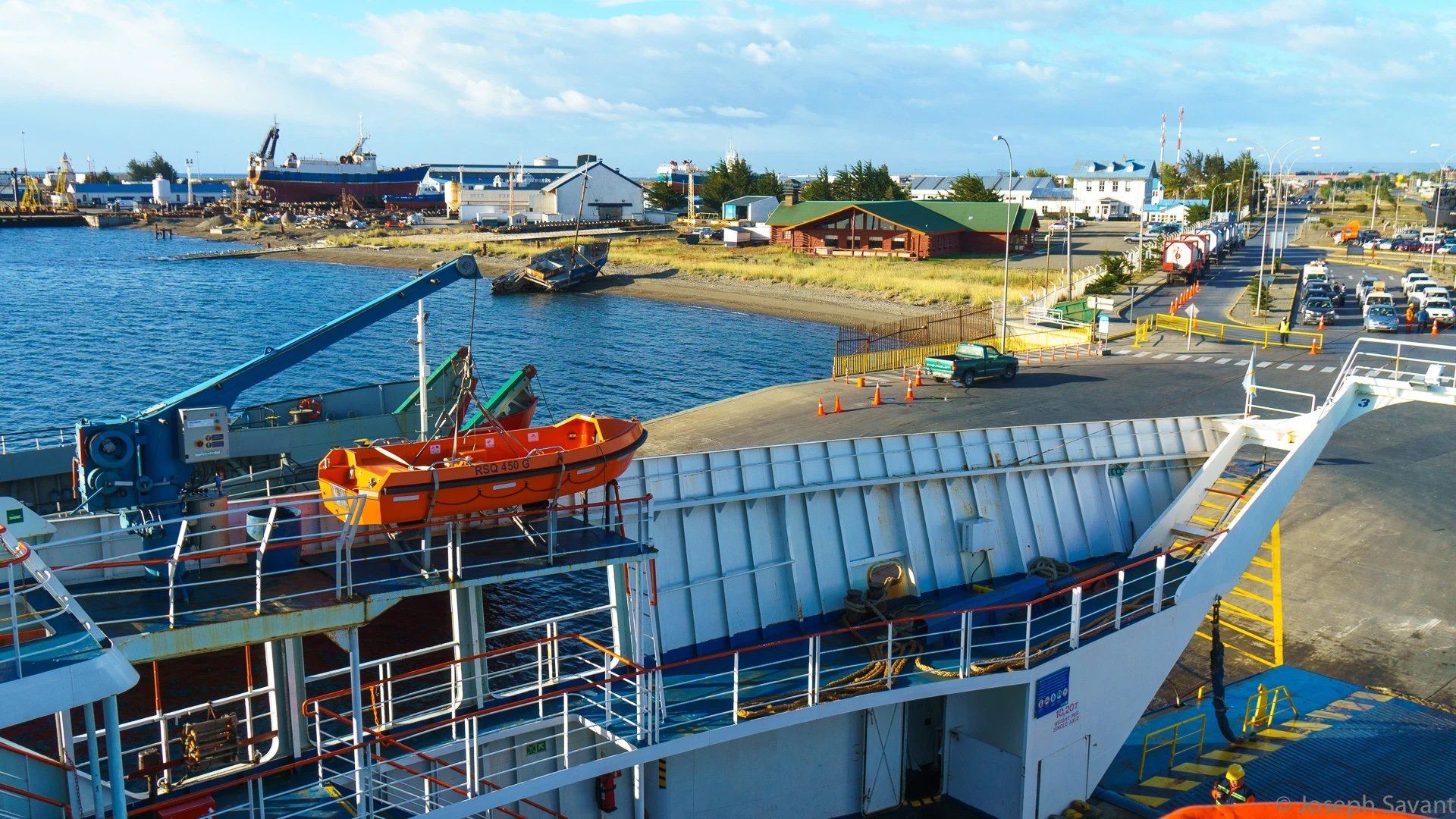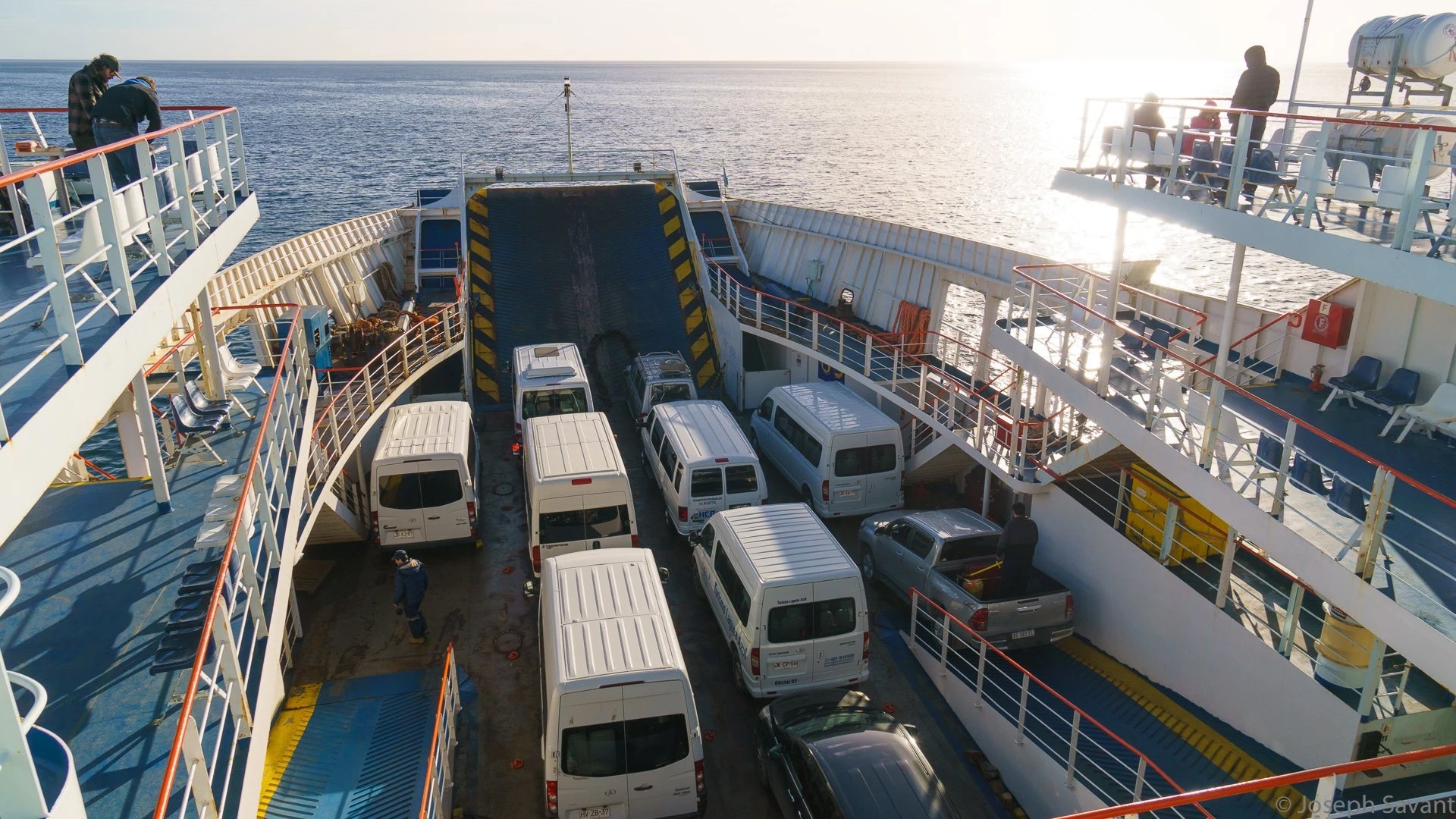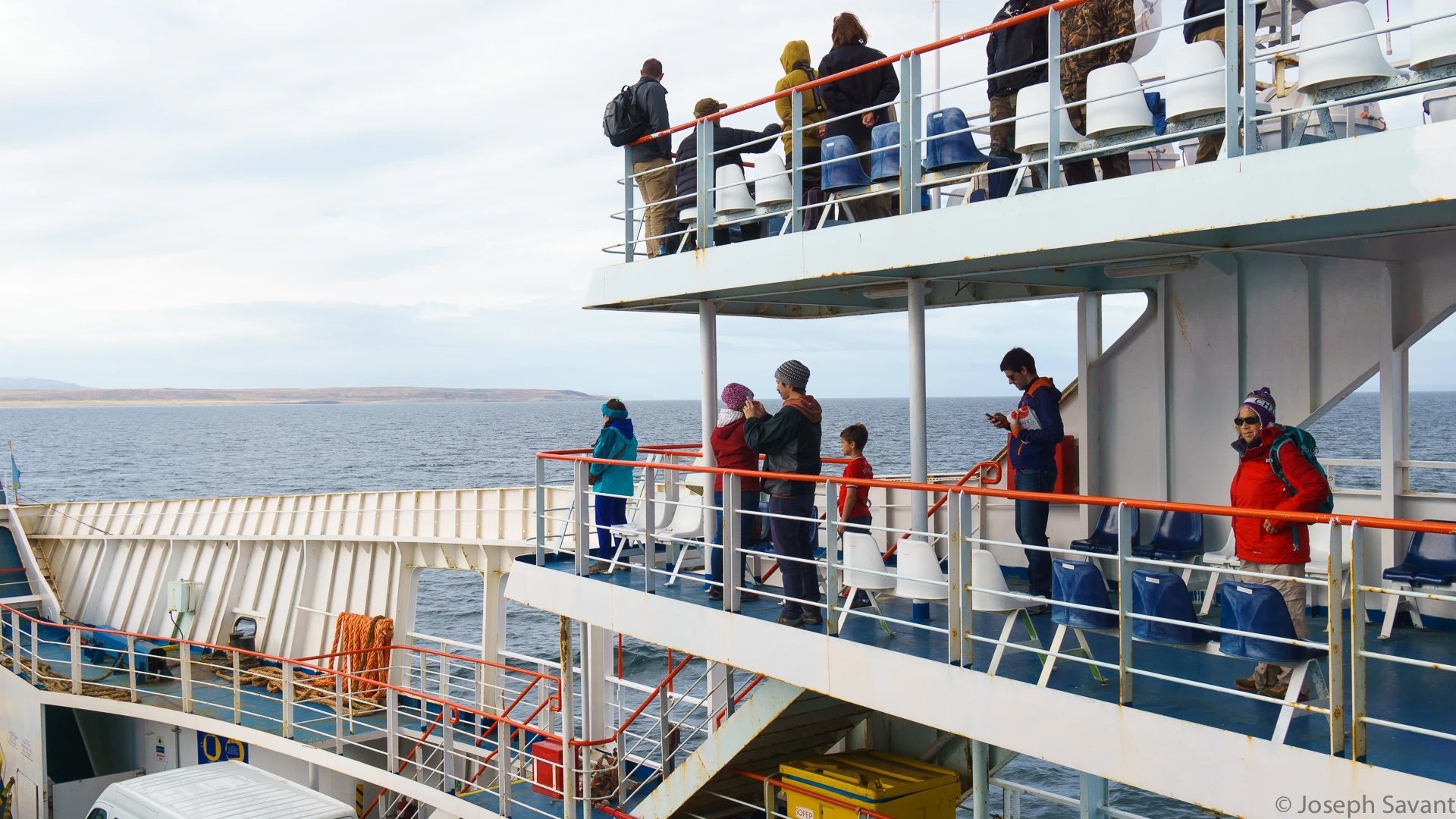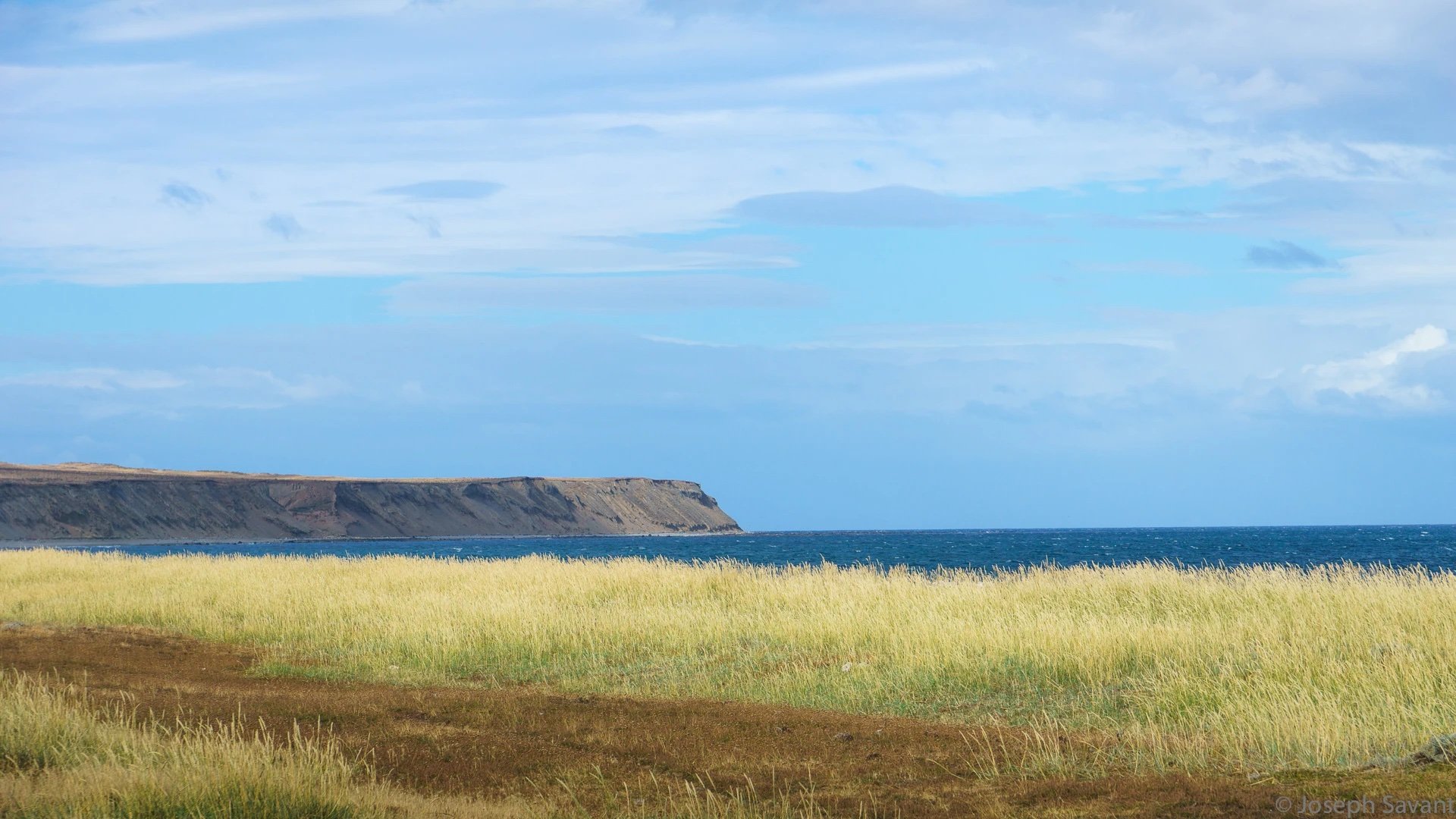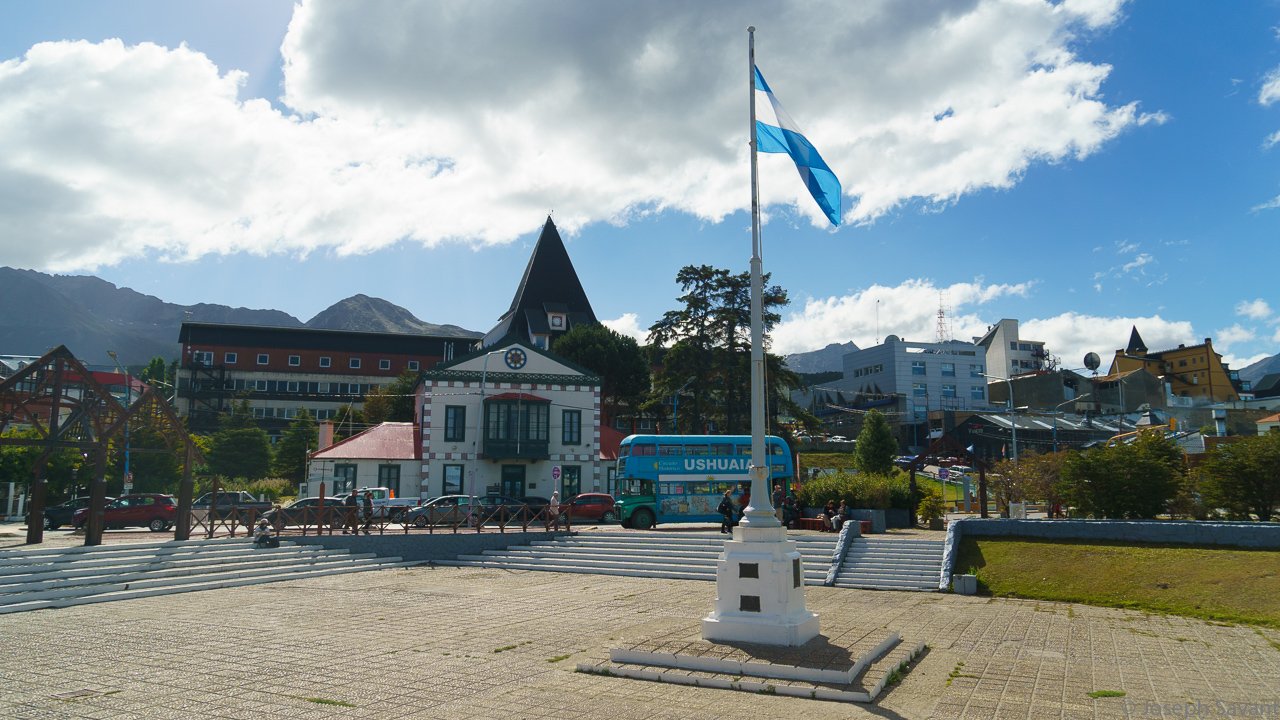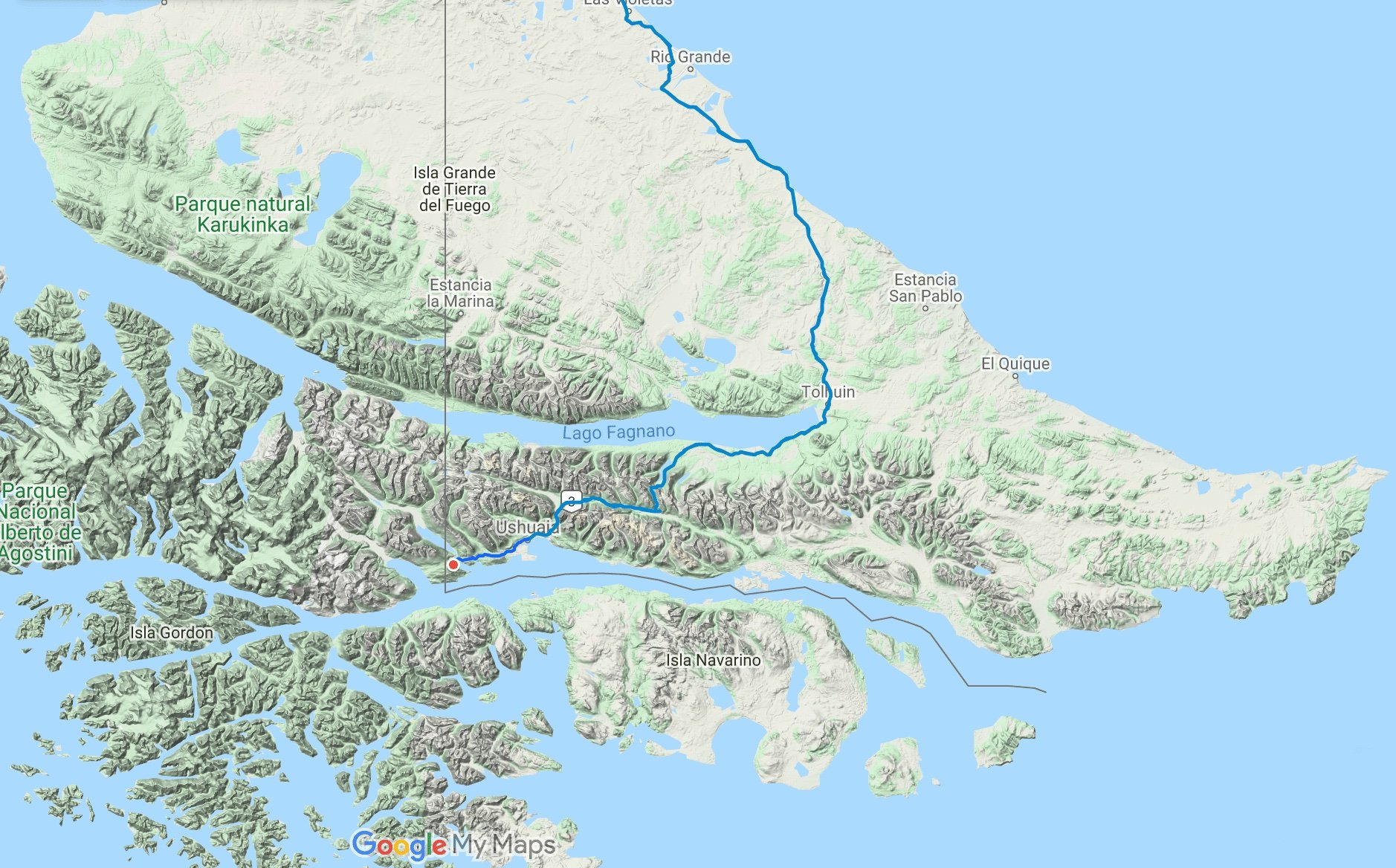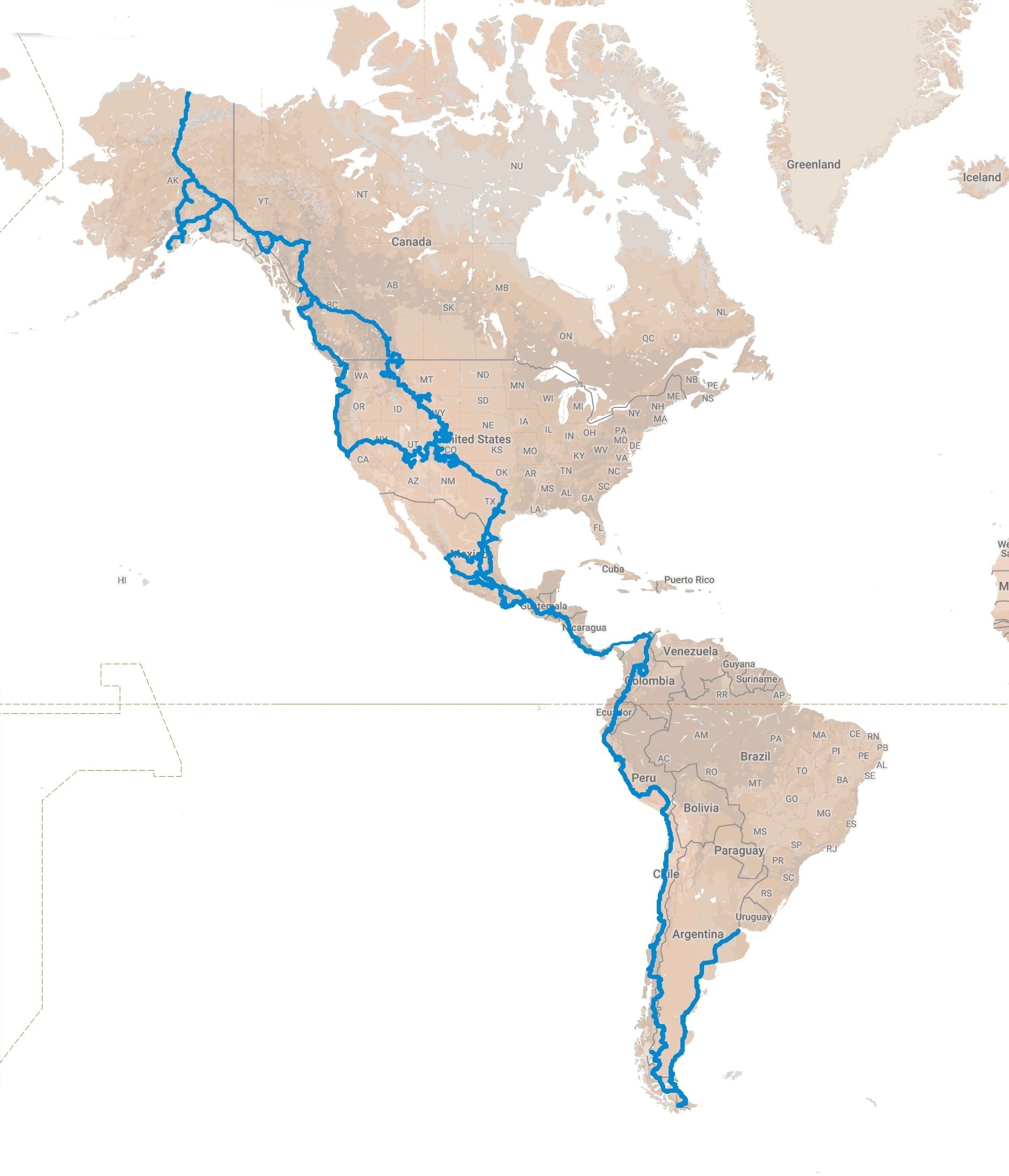1.16.2018
My time in Lima was mainly spent within the Miraflores area around the hostel, a good mix of upscale and funky. The traffic congestion of the city is massive, and with the time and danger involved when on a moto, I opted to mostly walk and explore. The moto travelers in the hostel were relaxing and re-thinking their plans and destinations, a common occurrence I've found. It was a chill time for all of us. Some other moto travelers staying at a different hostel had come to hang out with a couple of the guys, including a guy named Philippe from Switzerland. He'd been exploring South America and after knee surgery had given up his DR 650 and had just purchased a 4WD diesel van. He'd bought it in Lima and was in process of getting it sorted for his explorations.
That evening I was contacted by Suzie and Kelvin (https://www.avvida.co.uk), whom I’d met with Michnus and Elsebie in Cuenca. The four were still traveling together and currently in Cusco. Suzie asked if I was coming to Cusco, and if so could I bring a package from a friend who was in Lima. Turned out their friend was Phillipe whom I'd just met, and we got a chuckle out of our chance meeting. I had learned that the traveler's community was small but interconnected, always helping other travelers when possible. The interconnectivity comes as travelers meet in various choke points along the way.
The next day while Touratech was disassembling my suspension, Ed and I visited a couple of moto shops. I was having a fantasy that I'd miraculously find a new waterproof jacket, something like a Rukka or BMW, on a clearance rack due to the fact that some buffoon had mis-ordered an XXL and it had been hanging on a rack for years... (Need I mention my fantasies might need improvement?)
One shop in particular, Motorrad Style and Tours, had an outstanding selection of gear, including Held jackets from Germany, but thank God they had none in my size or I'd have been tempted to buy one and go even further in debt. They also carried Heidenau tires in the size I needed and at about $210 USD wasn't too outrageously overpriced. Much of the gear in Peru fairly close to US prices, maybe about 10% higher. I was tempted to buy a new rear tire to replace the Motoz I'd had to buy in Panama City. I'd planned to replace my original rear Heidenau in Santiago, Chile, roughly 10,000 miles from Texas and usually about the lifespan I get from them. My unfortunate gash in Panama had forced me to buy an unknown brand to me, Motoz, and though I liked it, I could see splits developing early which concerned me. The sales guy said they didn't install them, but recommended I get Touratech to do the install if I did purchase one.
The shop had every color shield and accessory Schuberth makes - never seen so much Schuberth stuff in one room
Despite my pushing him to, Ed decided not to buy any rain gear and continue on with his $1.50 blue balloon Colombian rain suit. One of the riders at our hostel had bought an inexpensive set of construction worker's rain gear, and donated the new day-glo orange pants to Ed to help his rain suit cause.
Touratech contacted me the next day and said the main seal of the rear shock was leaking due to dirt contamination, which was considered normal wear and tear and they wouldn't cover it under warranty. Ivan said the shaft seal was always the fail point of wear from dirt, and I pointed out that the shock had not been used heavily offroad, and that I'd put a MudSling protector on it from the day it was installed. I wasn't happy to hear that it wouldn't be covered under warranty since it was a damn expensive, supposedly overbuilt state of the art shock and it had failed miserably with very low mileage. However, I was glad they could repair it and get me back on the road without some huge delay, and if I ended up having to pay, I would. One thing I've learned in life, is that high-priced, supposedly superior products usually aren't, except in a few cases. Believe me, after a 30 year career buying huge amounts of photography gear, not to mention motorcycle and other hobby toys, the hype rarely meets reality.
Ivan at Touratech had spotted the splits on my rear Motoz tire when I initially brought the bike in and recommended replacing it. I told him he had read my mind, as at low mileage the Motoz tire had begun developing cracks around the tread lugs, something that happened on Heidenaus but only as they neared the end of their life, not at the beginning.
Ivan told me all the Motoz Tractionator or Tractionator GPS tires they'd seen in the shop on adventure bikes always had splits and they commonly replaced them. I was glad to find out they stocked Heidenaus. When Michnus had seen my tire earlier in Colombia, he'd informed me fellow traveler Kevin Chow had the same issue with splits very early on his Tractionators. Kevin had finally gotten a response from Motoz, saying they would replace the tire in Colombia, however he was already much further south in Argentina. My emails to Motoz never even got a response.
The bike would be ready with the rebuilt rear shock and a new rear tire the next morning, a Saturday, so I caught a cab from the hostel over to the shop. It had been cleaned and detailed, looking almost brand new. Good news as well, since Ivan had spoken with Touratech in Seattle and Germany and they agreed to cover the shock rebuild as a warranty issue. The bike felt like new again, the suspension tight and stiff, with my feet barely touching the ground since it had no luggage on board. After the shock had failed, my feet had been flat footed easily.
Sweet mama biscuits, she's clean and has new shoes!
Riding the bike back to the hotel felt good and the new tires made me feel warm and fuzzy inside. I looked forward to getting the luggage on and hitting the road again.
Back at the hostel I once again combed through my gear and deleted a few more things to save a few ounces. I decided to leave the brand-new Motoz front tire I'd been carrying with Ernesto the hostel owner in case someone needed a new front tire.
The next morning I loaded the bike with the cases, only to find the suspension sagged badly and was very soft. My first thought was the rebuild had failed and lost pressure already. Trying to adjust preload had no effect on the sagging. I'd had so many failures of gear on this trip, many unmentioned in the blog, that my nerves were raw. I hoped it simply needed readjusting, but visions of yet another delay and frustration swirled in my mind and out of my mouth. So much worry, waiting and then disappointment. It seemed Ushuaia was slowly fading away in time.
After getting packed we made our way back over to Touratech and the technician tried to adjust the shock but it made no difference. After all the BS and worry on the main seal repair, the loss of the month and money spent, then the failure of the rear shock and how much the issues had changed my plans, my blood pressure skyrocketed at the thought of waiting for additional parts or repairs or replacement.
When Ivan finally arrived at 2:30, he jumped in the shop and after about 30 minutes or so asked me to come try the bike. It was indeed better but still sagged more than before the failure. He suspected the springs had sacked out and said they'd replace them except he had none in stock in the rating mine were built to. The shock had been set up for my weight, plus a passenger with full luggage, so the current spring rate should have more than covered me and my gear alone. The fact that the springs were now weak and the shock had to be rebuilt so early in its lifespan for such a highly priced premium suspension was disappointing. I made the decision to keep going though the shock still wasn't 100%, but was better than a failed one. Expressing my frustrations on gear failures, it would be easy to mistake them for complaints, but Ivan and Touratech Peru were absolutely first class and I highly recommend them.
It was now 4 pm and the next destination of Nazca was many hours away. The way south out of Lima wasn’t too bad, other than a couple of streets that appeared to have been bombed, and we got onto the highway pretty easily. The blowing sand and high dunes continued and the landscape was desolate and ugly as we flew towards Nazca, riding through a legitimate late day sandstorm.
By the time we made the town of Ica, it was getting late and Nazca was too far in the fading light. Ed spotted an old hacienda style hotel and we grabbed a room for the night. It was a really nice place with many outdoor areas and rustic architecture. It was a little oasis in the midst of a desert and sand coated town. The night’s meal and cervezas were outstandingly good.
The next morning Nazca and its famous lines were the destination for the day. The ride continued in dust and dunes and desolation, yet amazing to see.
So many miles and hours of this, the mind can't help but wonder... what if?
Dropping into a river valley broke the barren terrain
As the day wore down, in the drone zone of hours blasting across a huge desert plain, a lone road sign appeared, "Lineas de Nazca". We hit the brakes hard and made the stop, rolling my bike in for a picture as Ed did the same. From nowhere a man appeared, as if he'd came out of a hole in the ground, as there was no hut or building and we’d seen no one around. It weirded us out. He was telling us not to put the bikes in front of the sign since we were actually in the archeological zone. It was shocking to realize we were actually riding through the Nazca lines on a road that cuts right through them.
I played "stupid gringo" and acted like I didn't understand the man, just long enough for Ed to hit the shutter on my camera, then backed the bike out. Ed rode his 800 up quickly and I got a shot of him as well to the high frustration of our shape-shifting attendant.
I added one of my stickers to the collection on the sign, jumping as high as I could to make it harder to obscure or be removed, to which the magical sign attendant shook his head in frustration... as if one more somehow mattered.
A few meters down the road we stopped to climb a viewing tower and get a couple of pics, realizing how close the lines were to the edge of the highway. It was hard to imagine that these lines and drawings could last for such a long time, until I read that this desert never receives rain and now scientists are worried that with the climate change rains may come.
Overhead, the constant buzz of single engine aircraft called your eyes to the sky, dipping their wings from side to side in sharp turns for the viewing benefit of passengers, but as likely to nauseate the poor folks as well.
From the safety of my couch watching documentaries, I often wondered why the Nazca lines existed and who in their right mind would spend so much time making them... that is until I stood in this place and realized that if you lived in such an absolutely desolate locale, there wasn't a damn thing else to do for a hobby.
We fired up and blew on down the road for the town of Nazca itself. It was late afternoon and we desperately needed some grub when rolling in, parking at a little street-side cafe. A Suzuki DR650 puttered past, taking no notice of our two bikes parked on the street.
The hostel wasn’t too far away, and as we loaded up, Ed noticed his license plate was missing. It had been bolted to his side case, but in Lima, he wanted to ride around without side cases on the moto, so he'd used wire to hang it from his top case, forgetting to bolt it back on when we left town. A lone piece of wire hanging off his top case was evidence that the wind had flexed the wire until it broke, dropping the plate somewhere amid hundreds of miles of desolate road.
Ed decided he’d last actually seen the plate at the viewing tower for the lines and headed back to search the roadside while I went on to the hostel. The DR650 and rider we’d seen earlier was parked at the hostel but didn't acknowledge me. A couple of hours later Ed appeared at the hostel, having had no luck. I suggested getting a sign shop to make a fake one out of metal and he agreed. Considering Ed's passport, registration and moto title all had differing names on them, I figured his showing up at the Bolivian border with no license plate, probably wouldn't go over well...
A few days previous, Ken and Chip (I think) had mentioned insurance and I realized I’d forgotten to buy it after crossing into Peru. There was none sold at the crossing and once on the way into Peru and into the desert I'd simply forgotten in trying to make the town for the night, never to be remembered again. Ed's missing license plate would be a great excuse to get pulled over by the well known corrupt Peruvian police, in which I'd get busted for no insurance. After some thought and discussion, the much larger city of Cusco seemed to be a better place to have a fake plate made up than in the village of Nazca.
The evening in the hostel was spent uploading photos and updating the blog on the excruciatingly slow Peruvian internet.
Lima to Ica and Nazca


